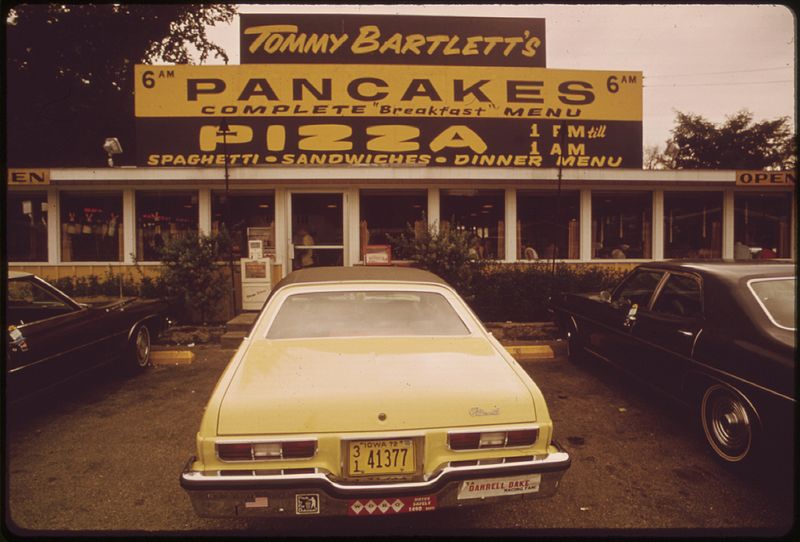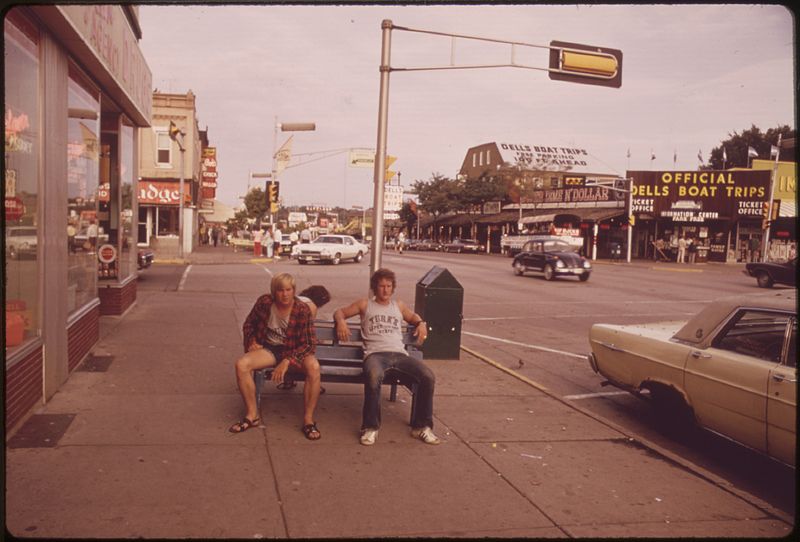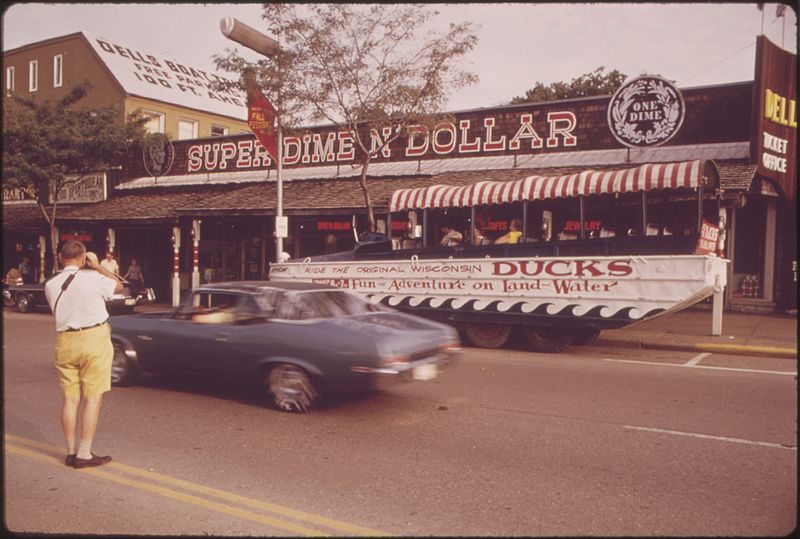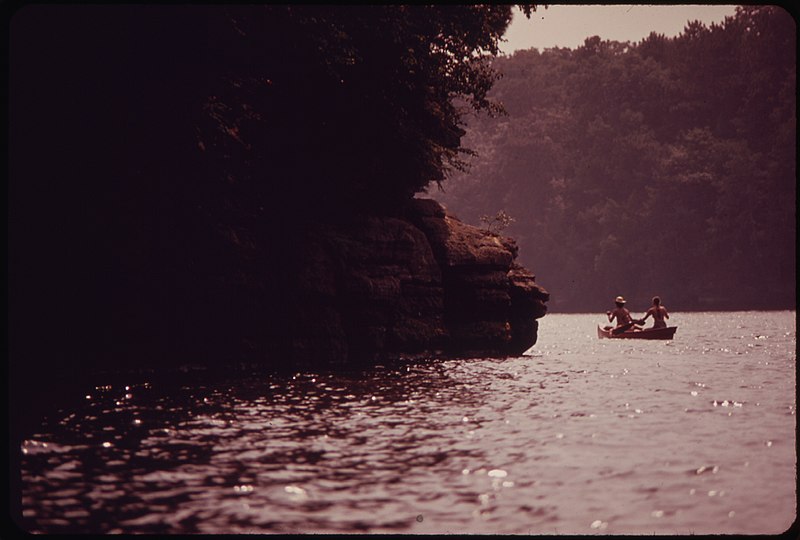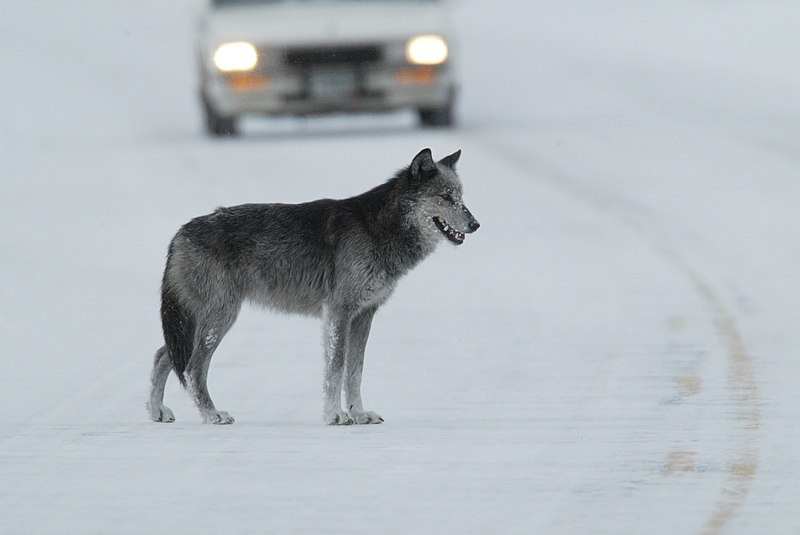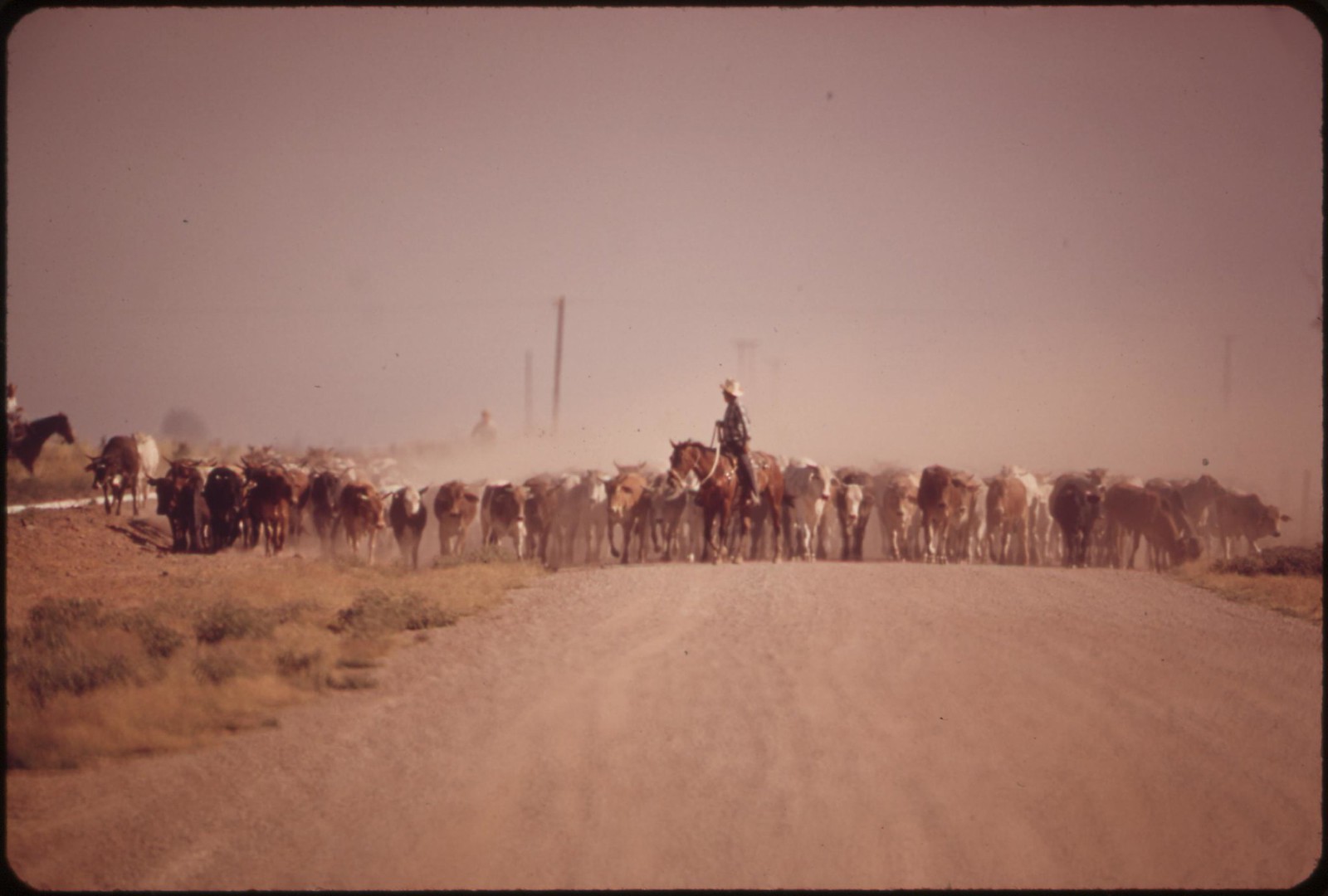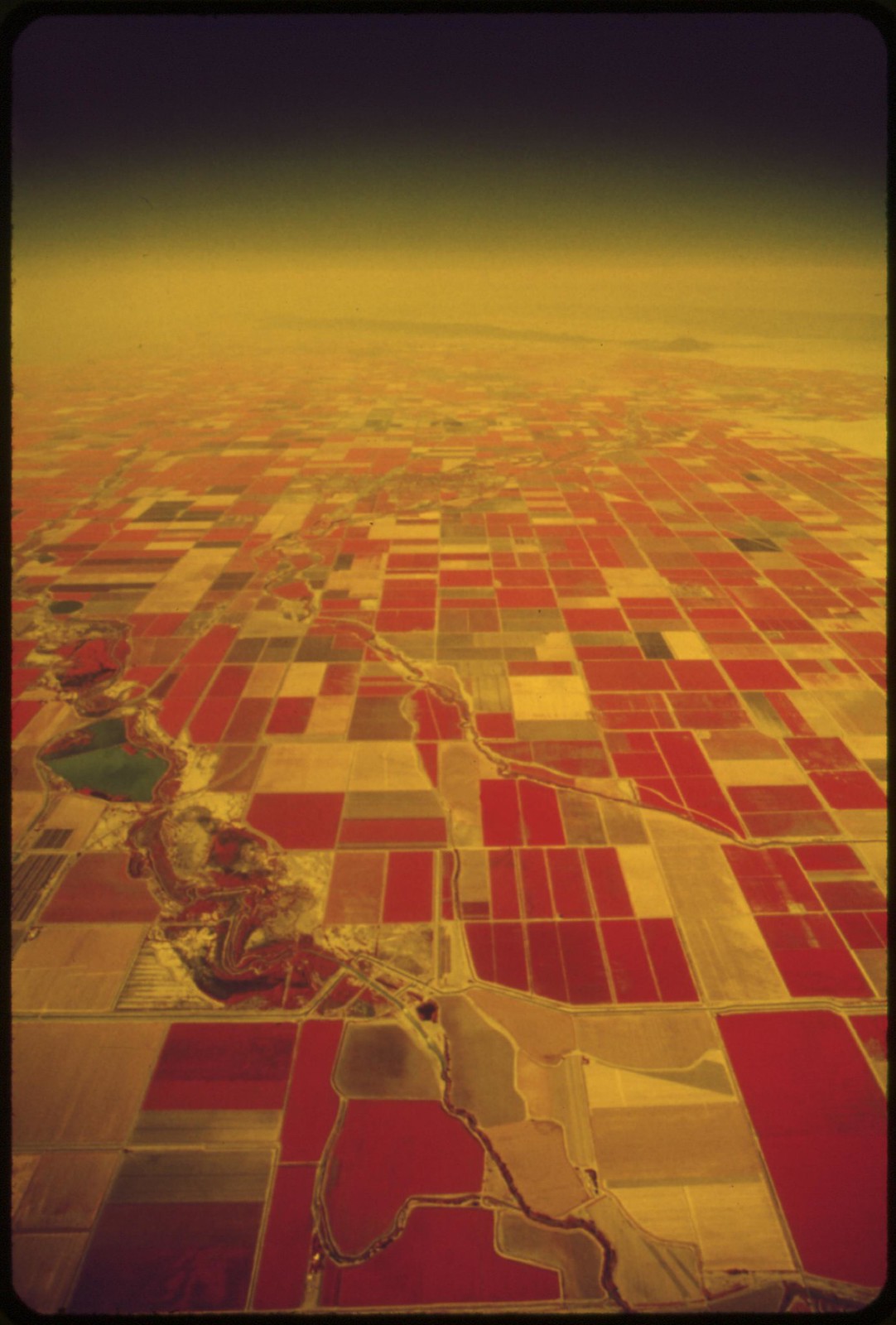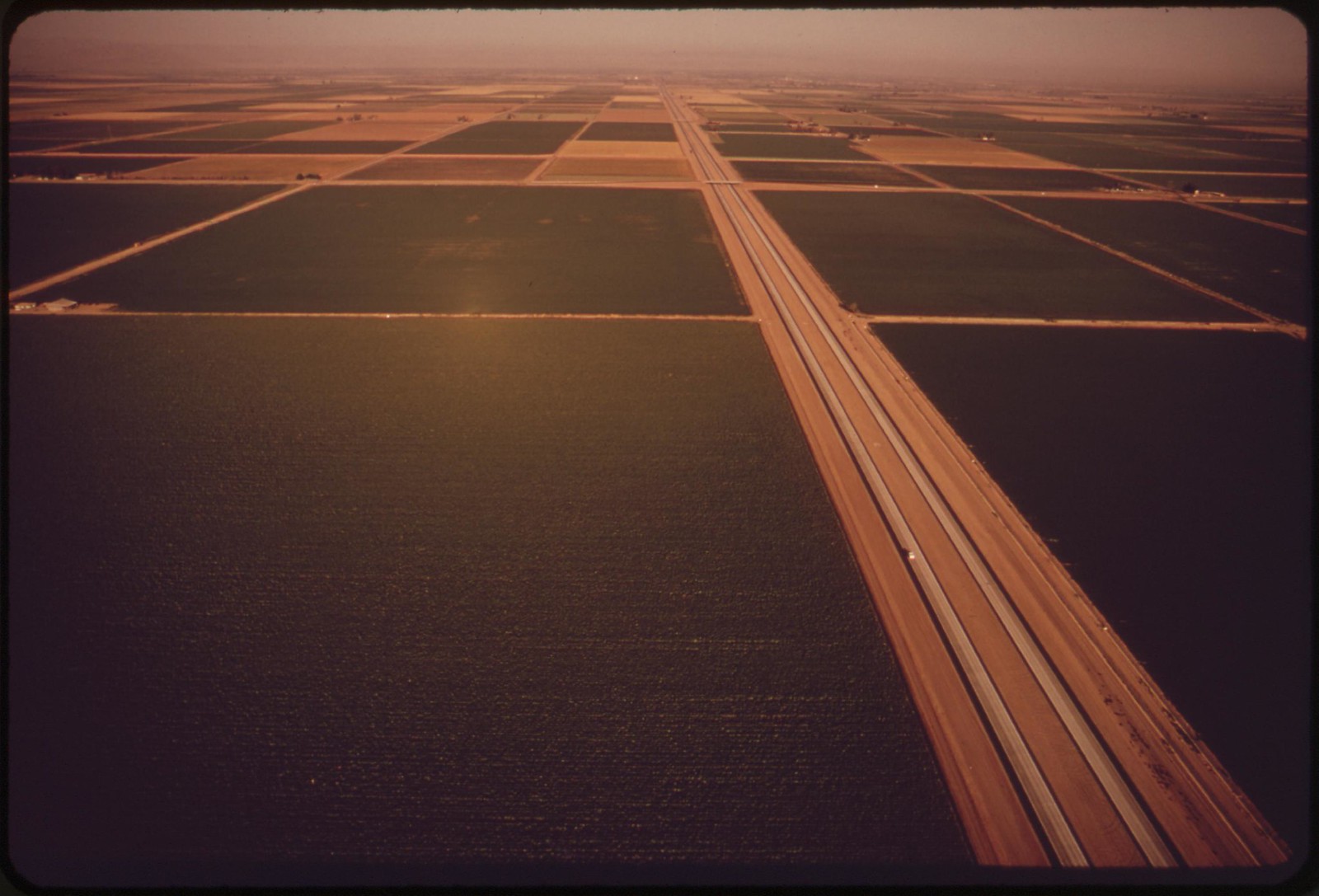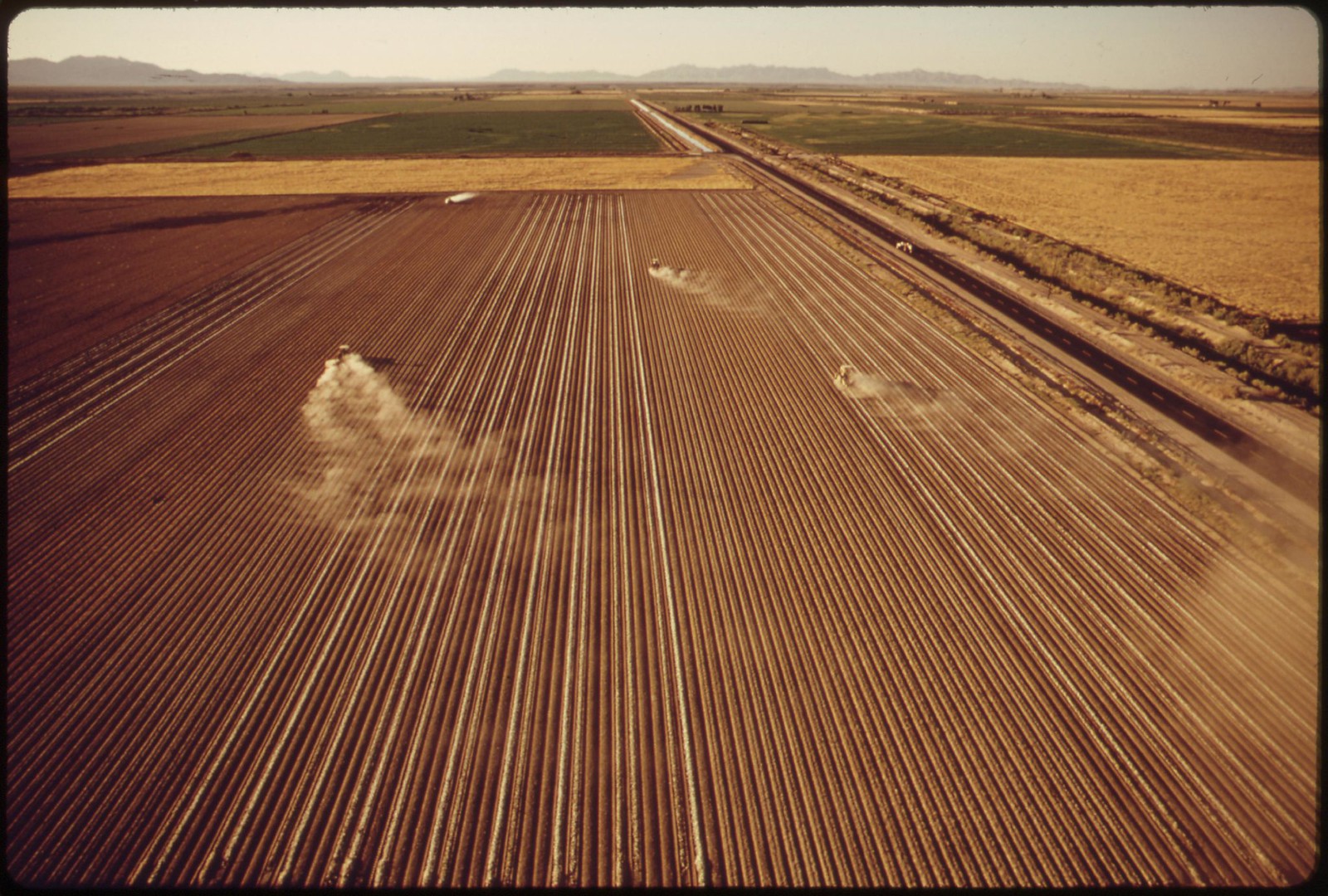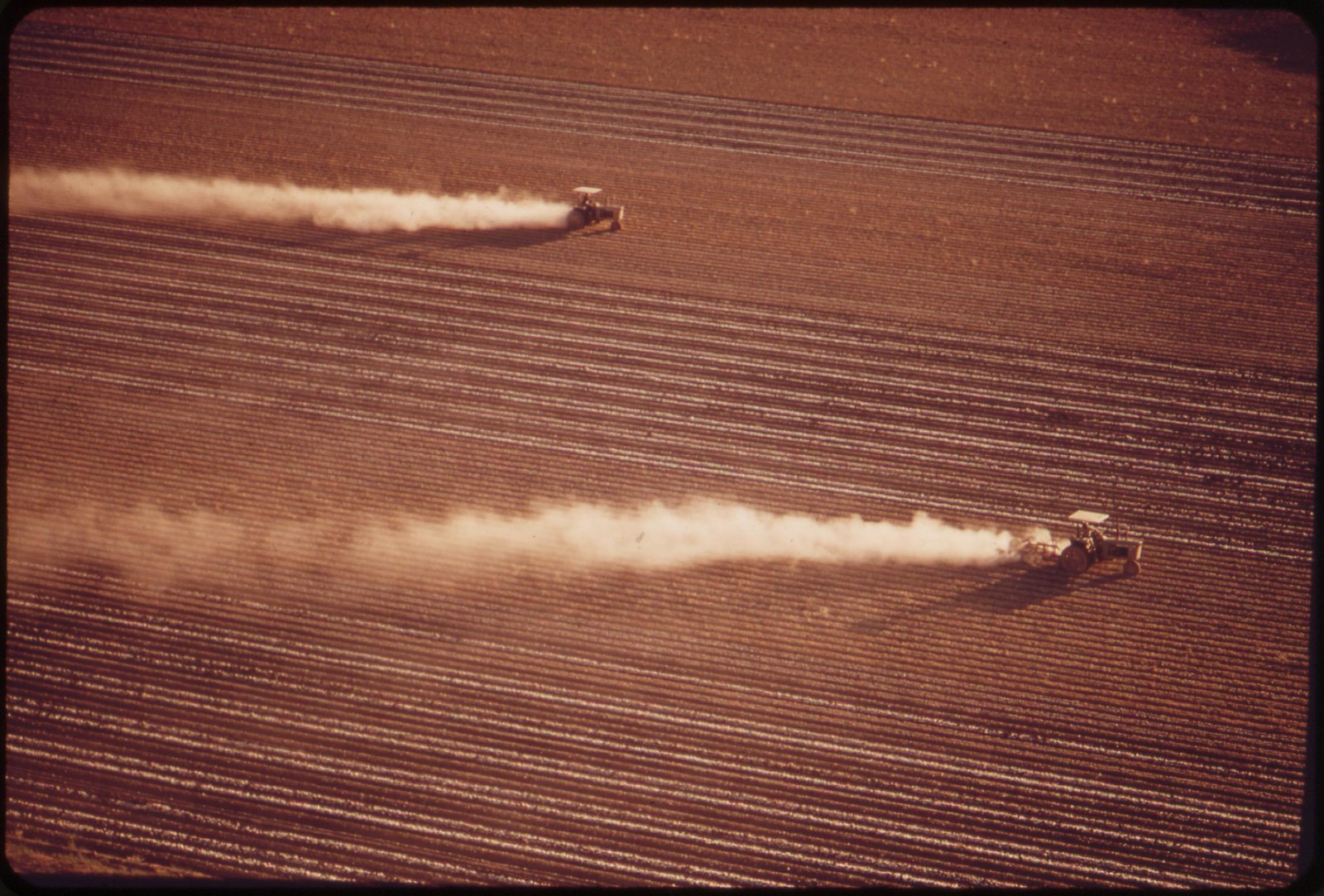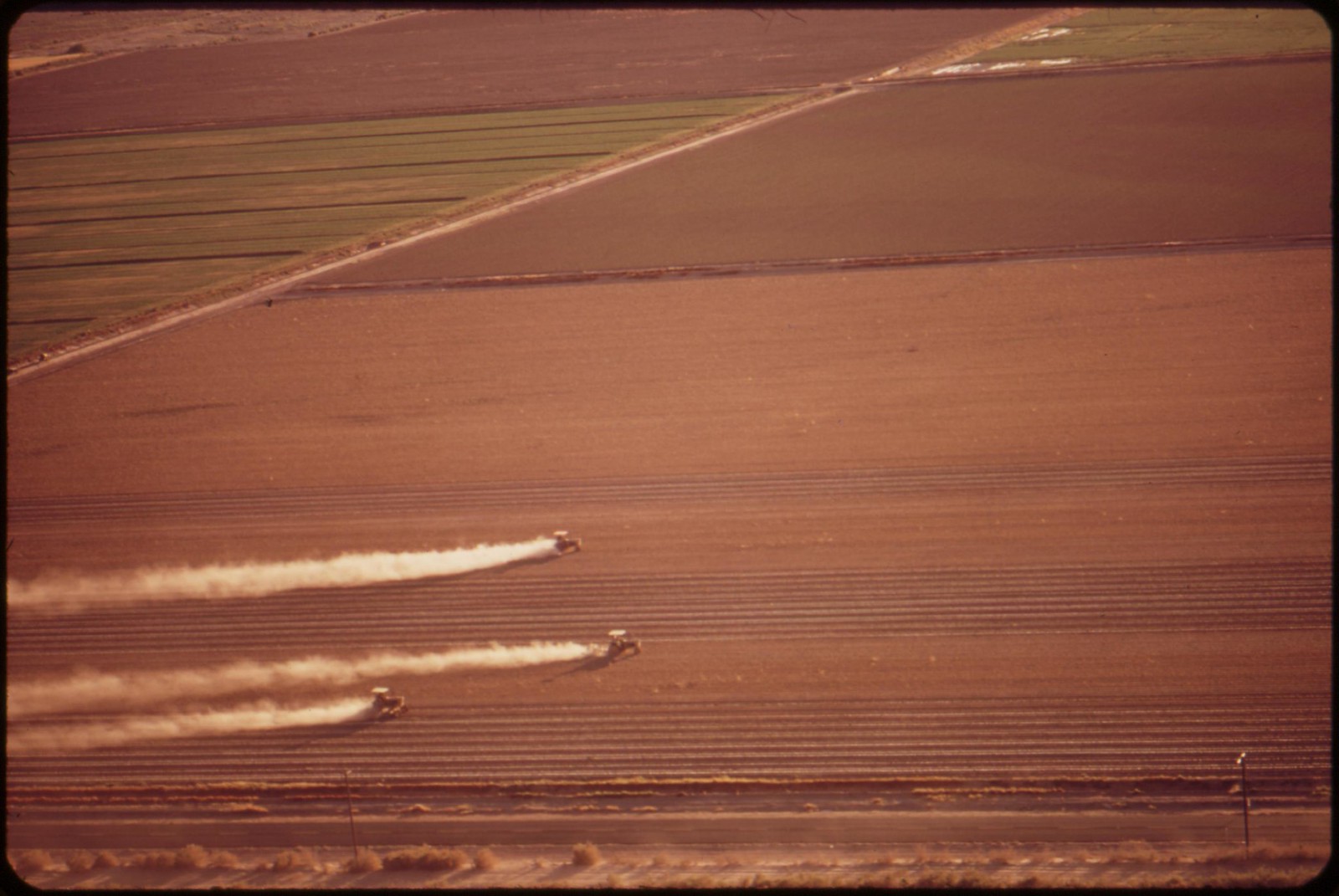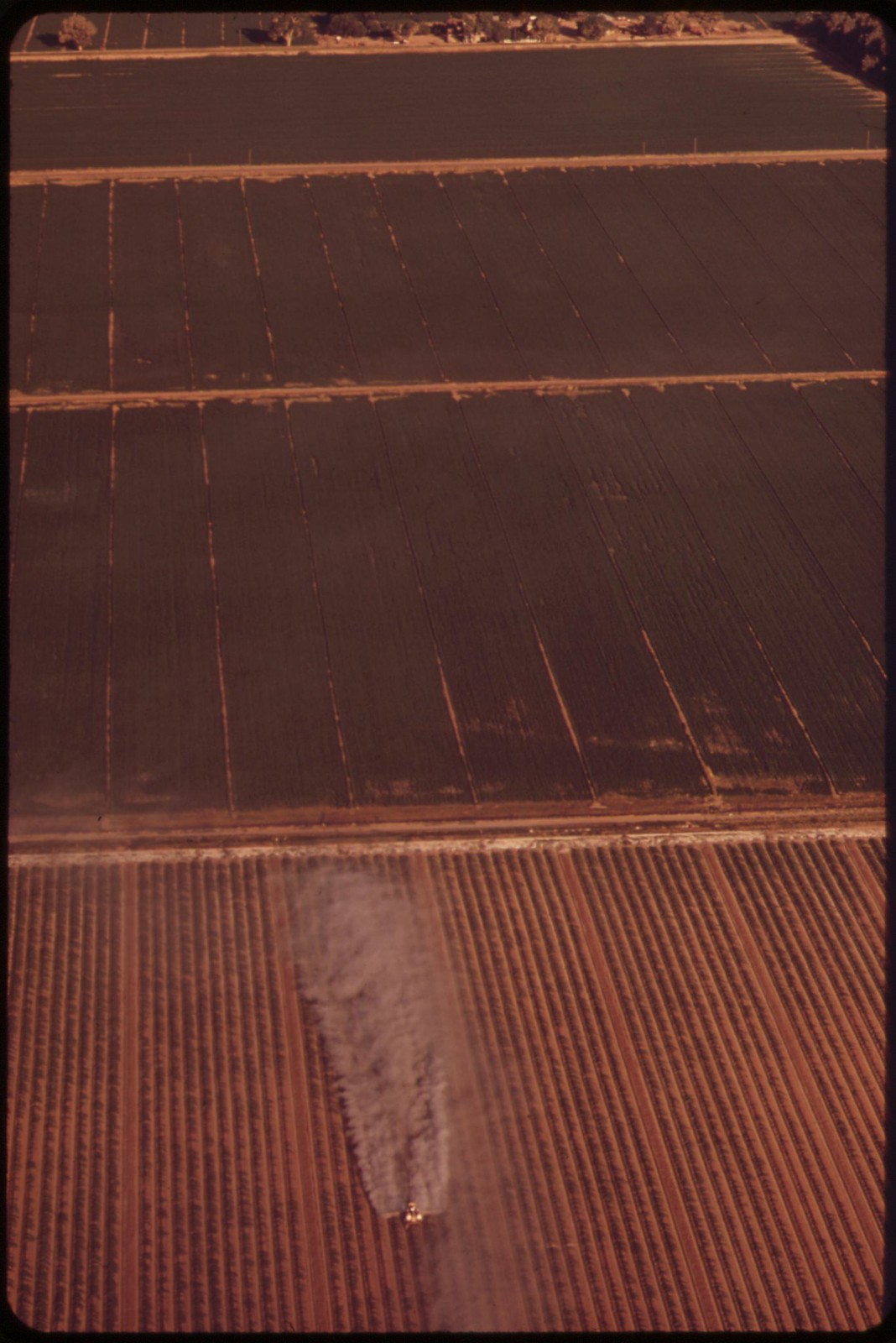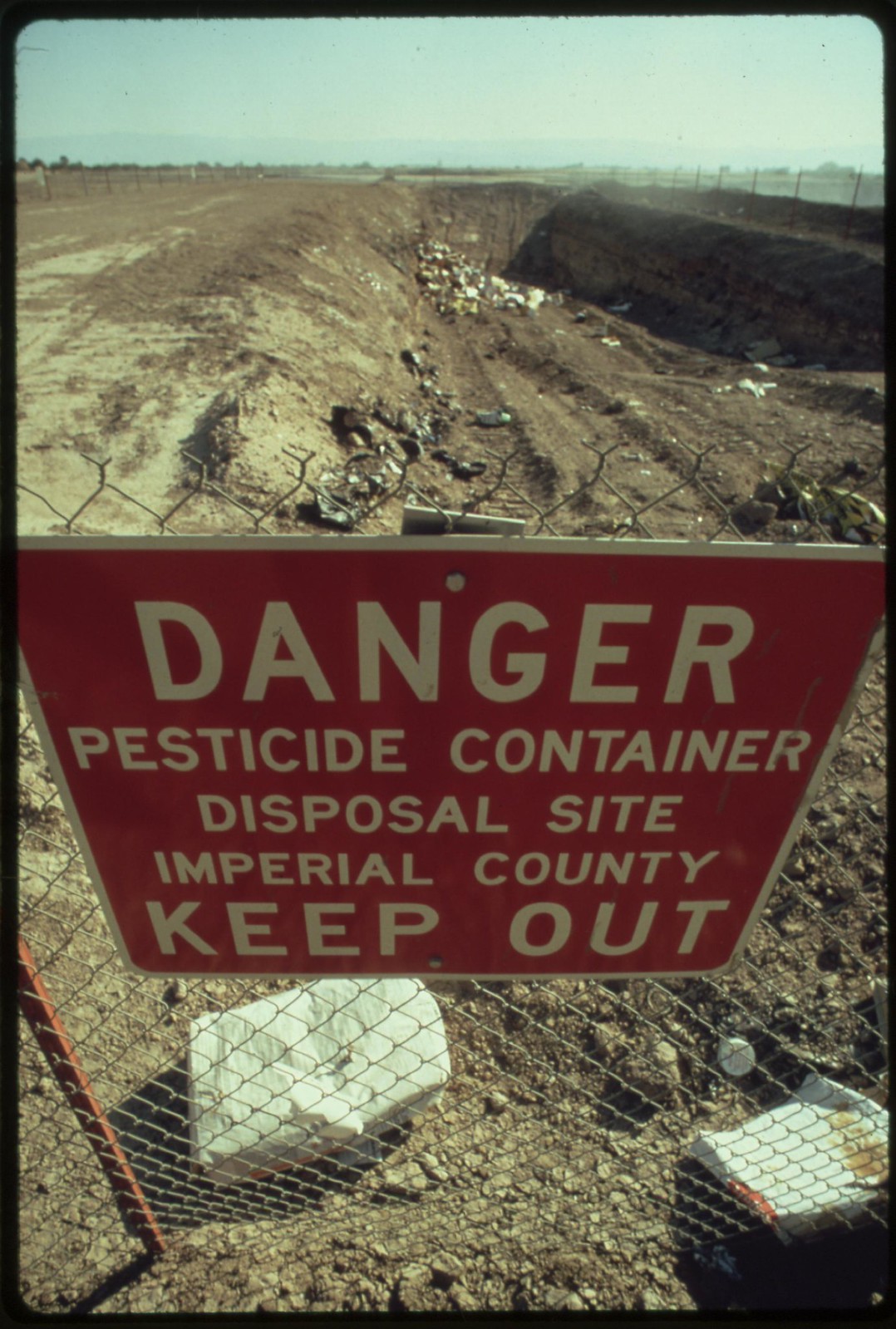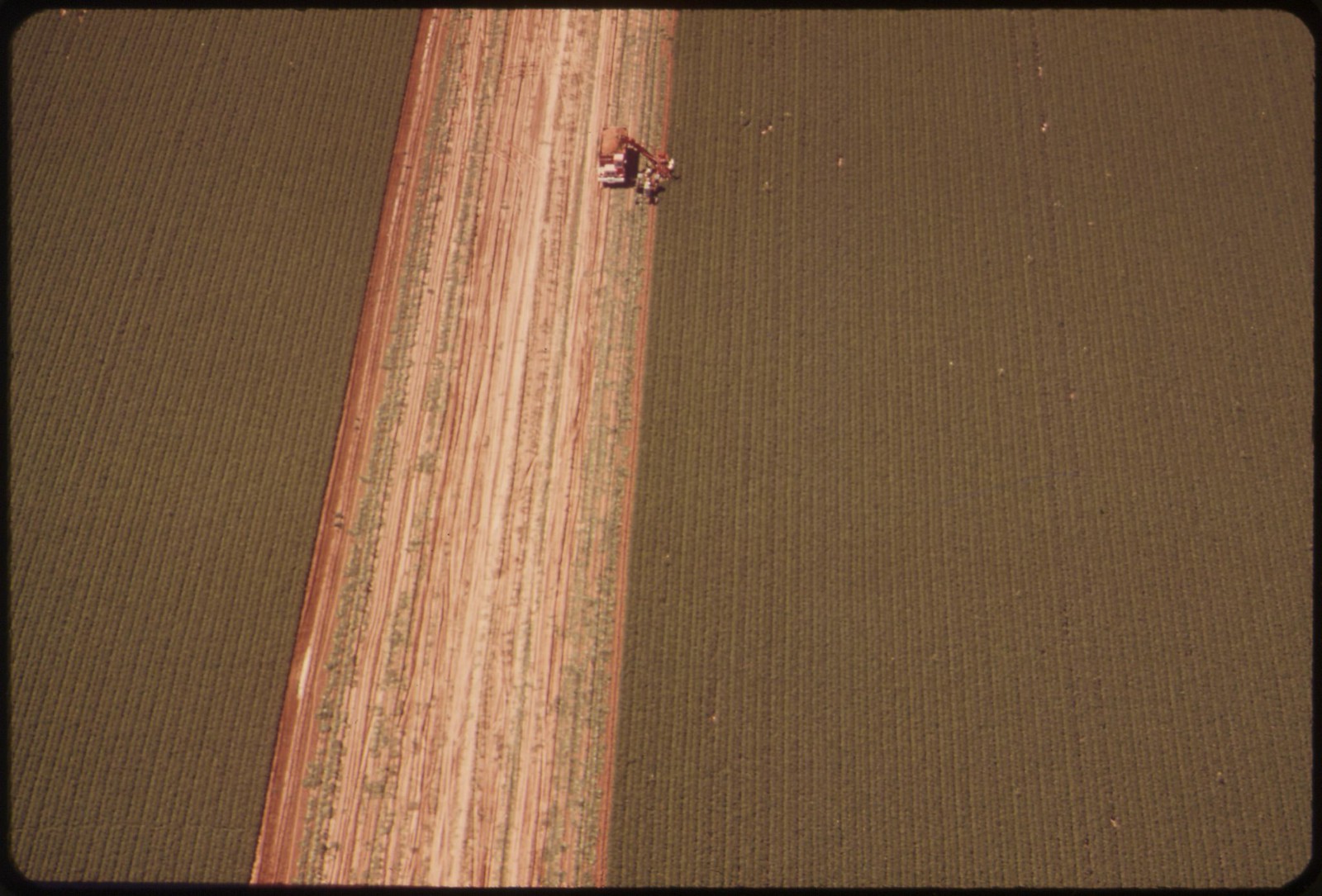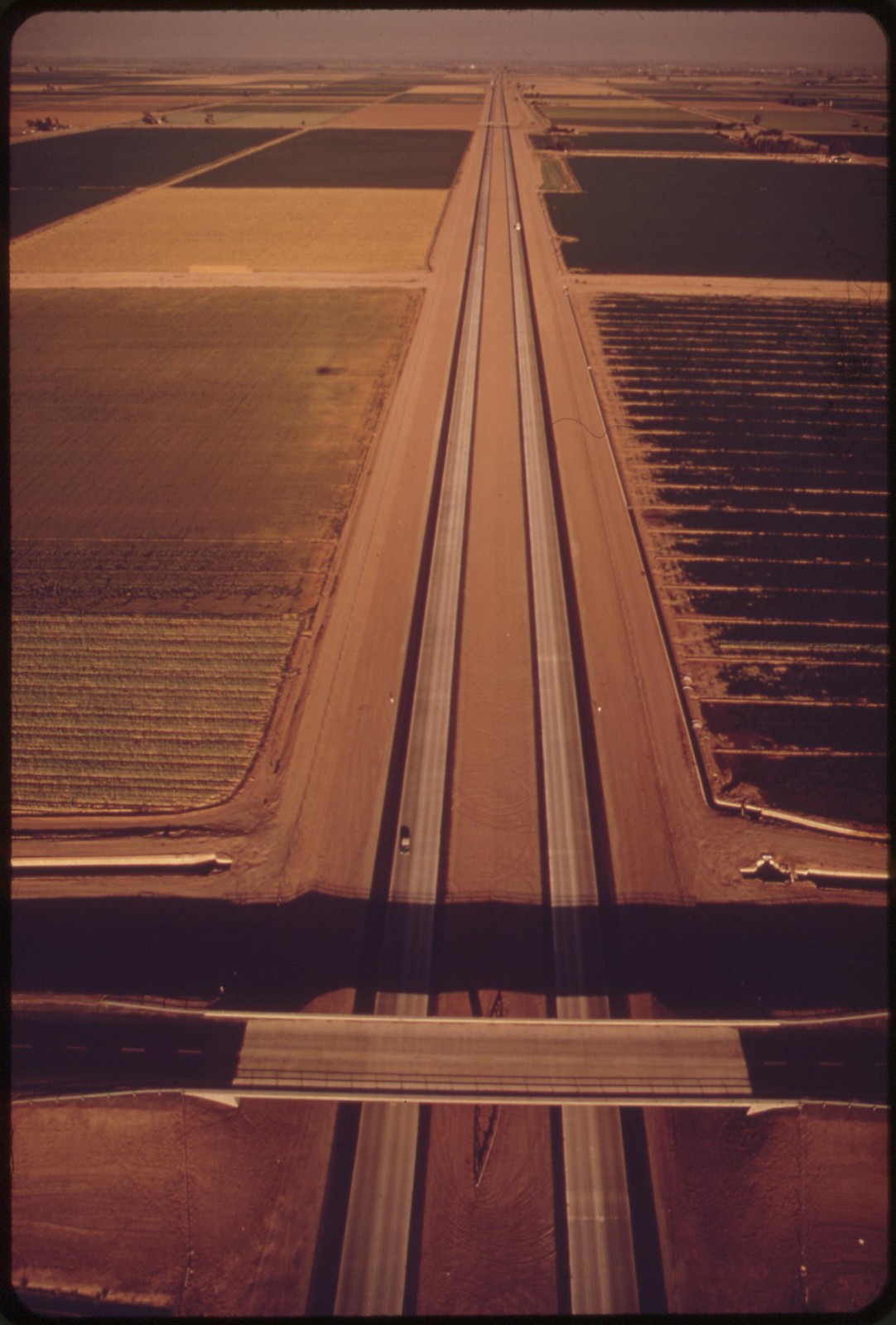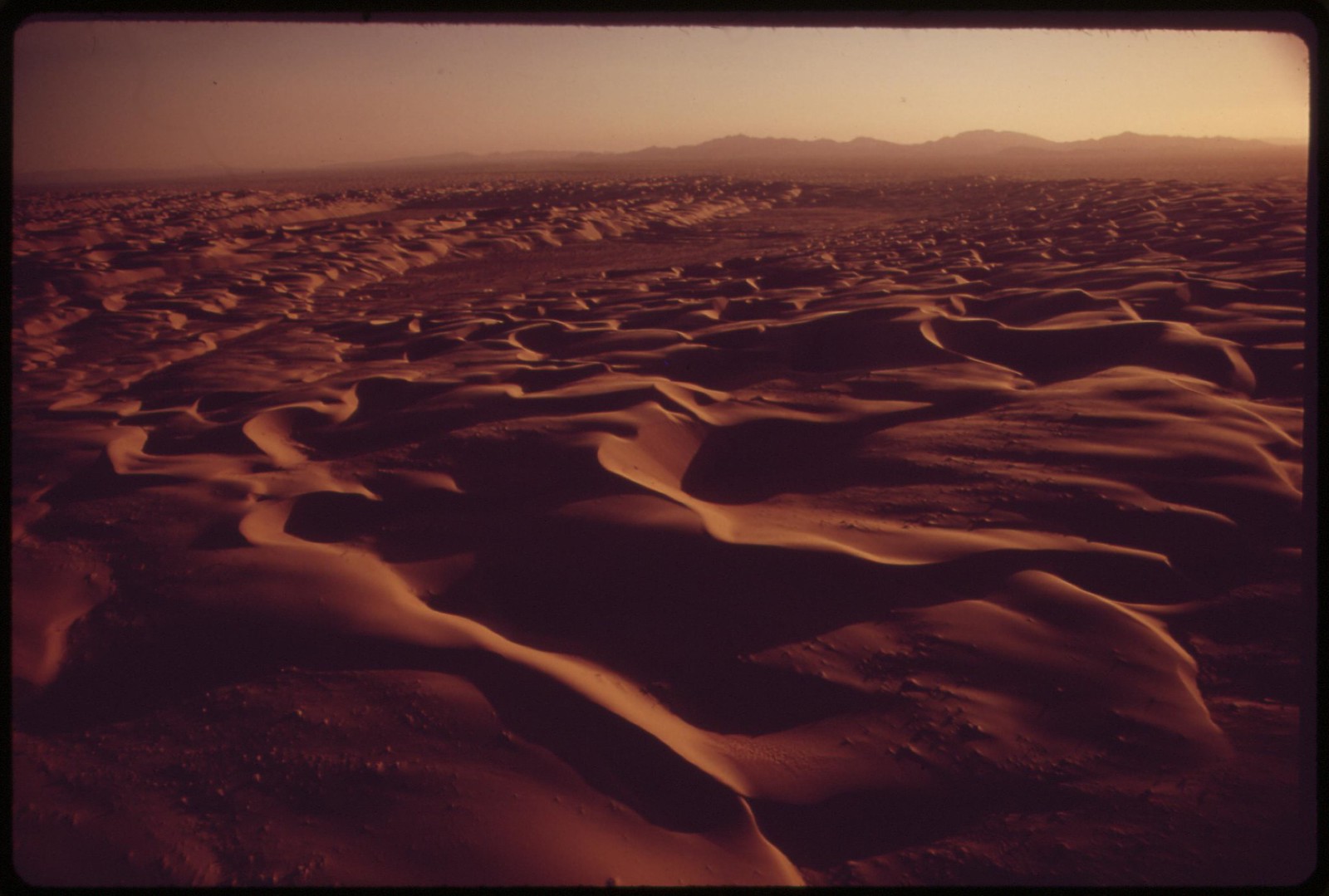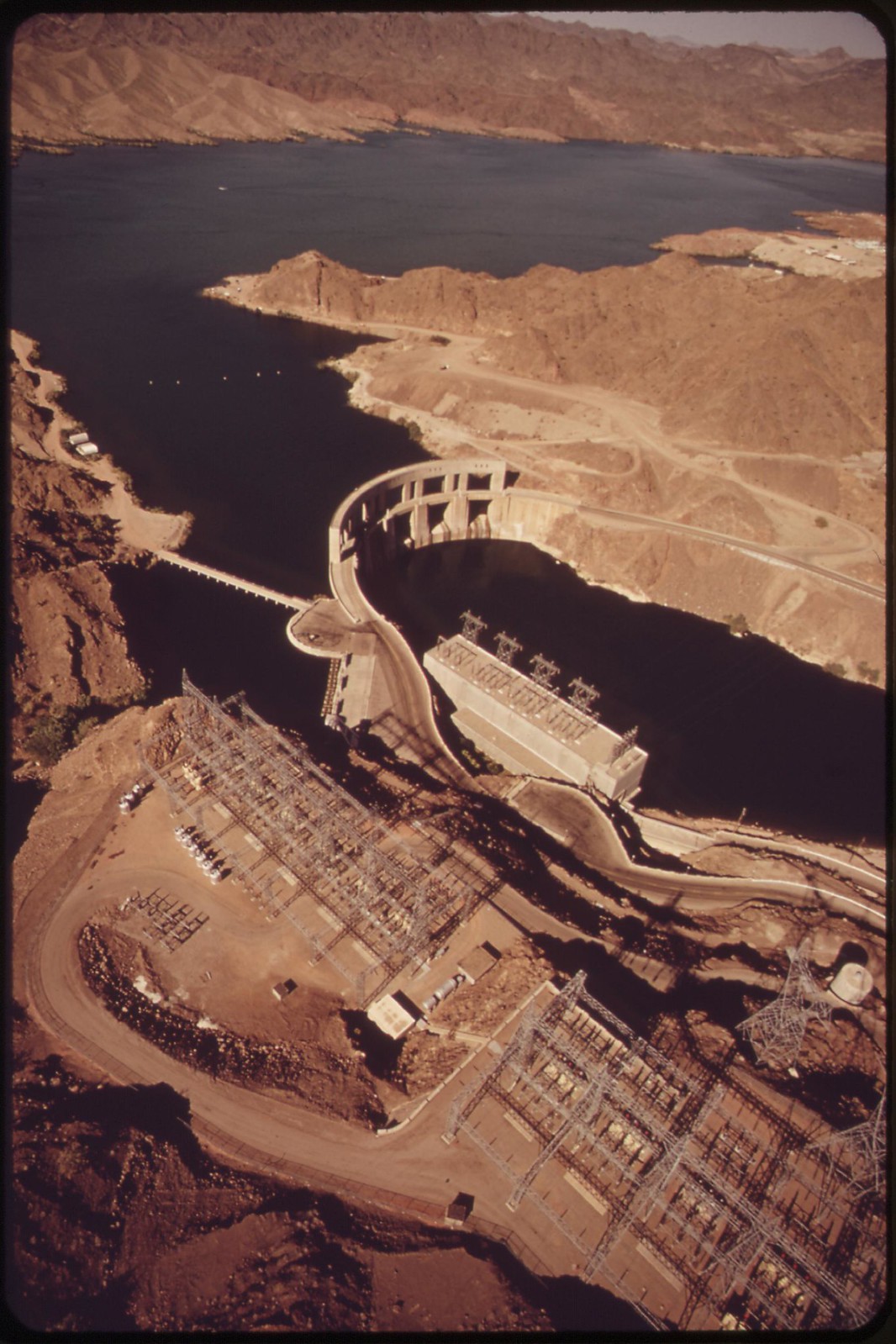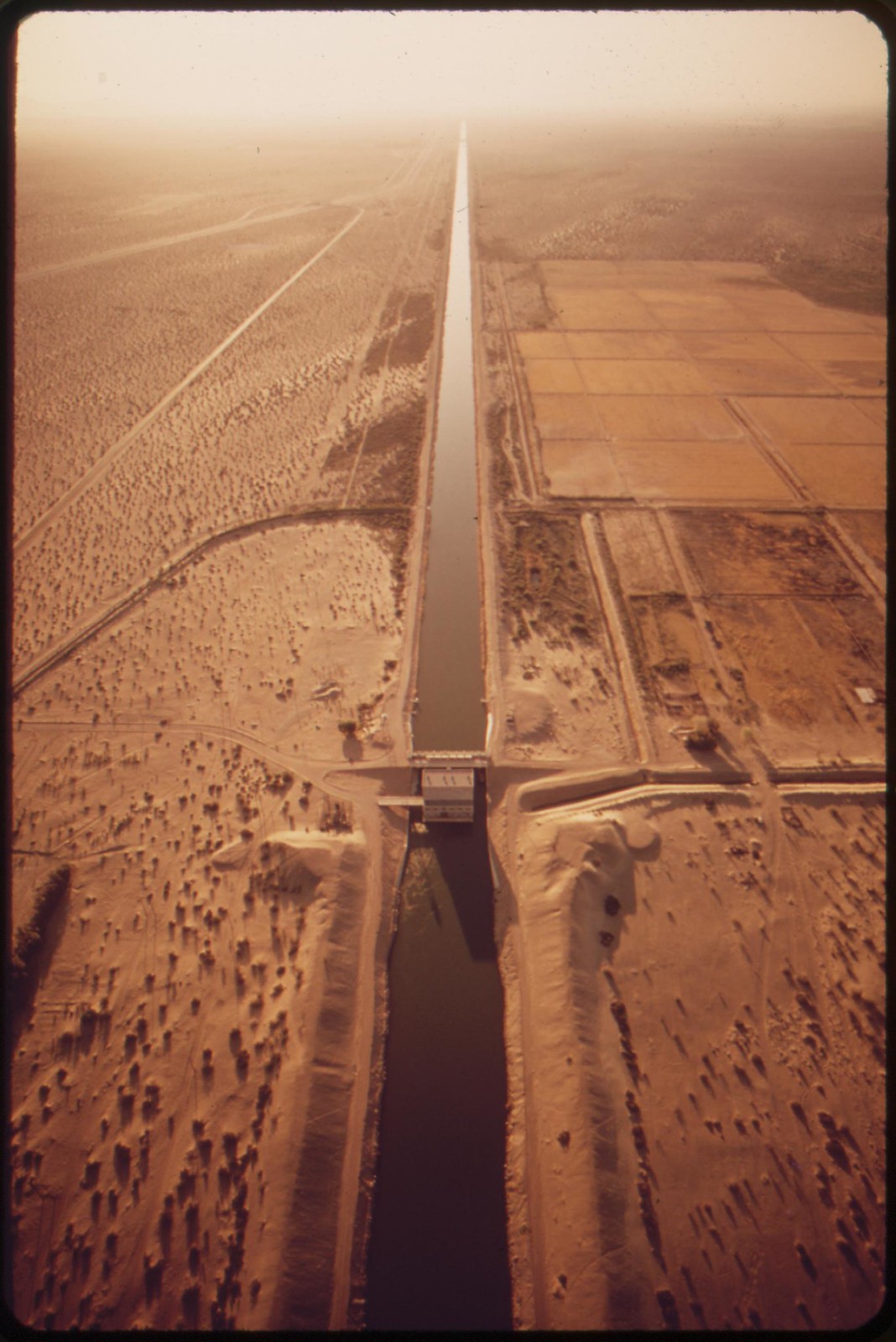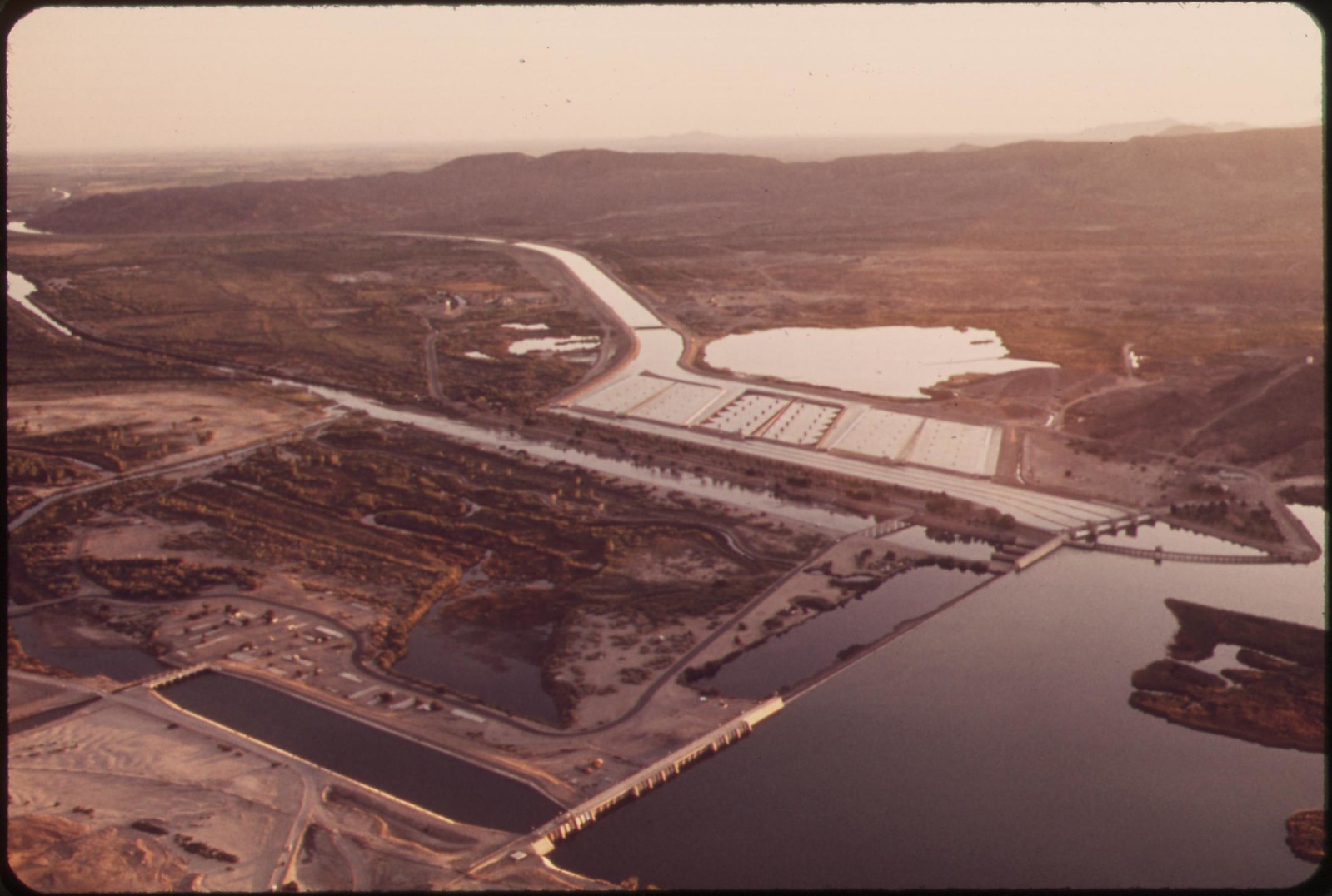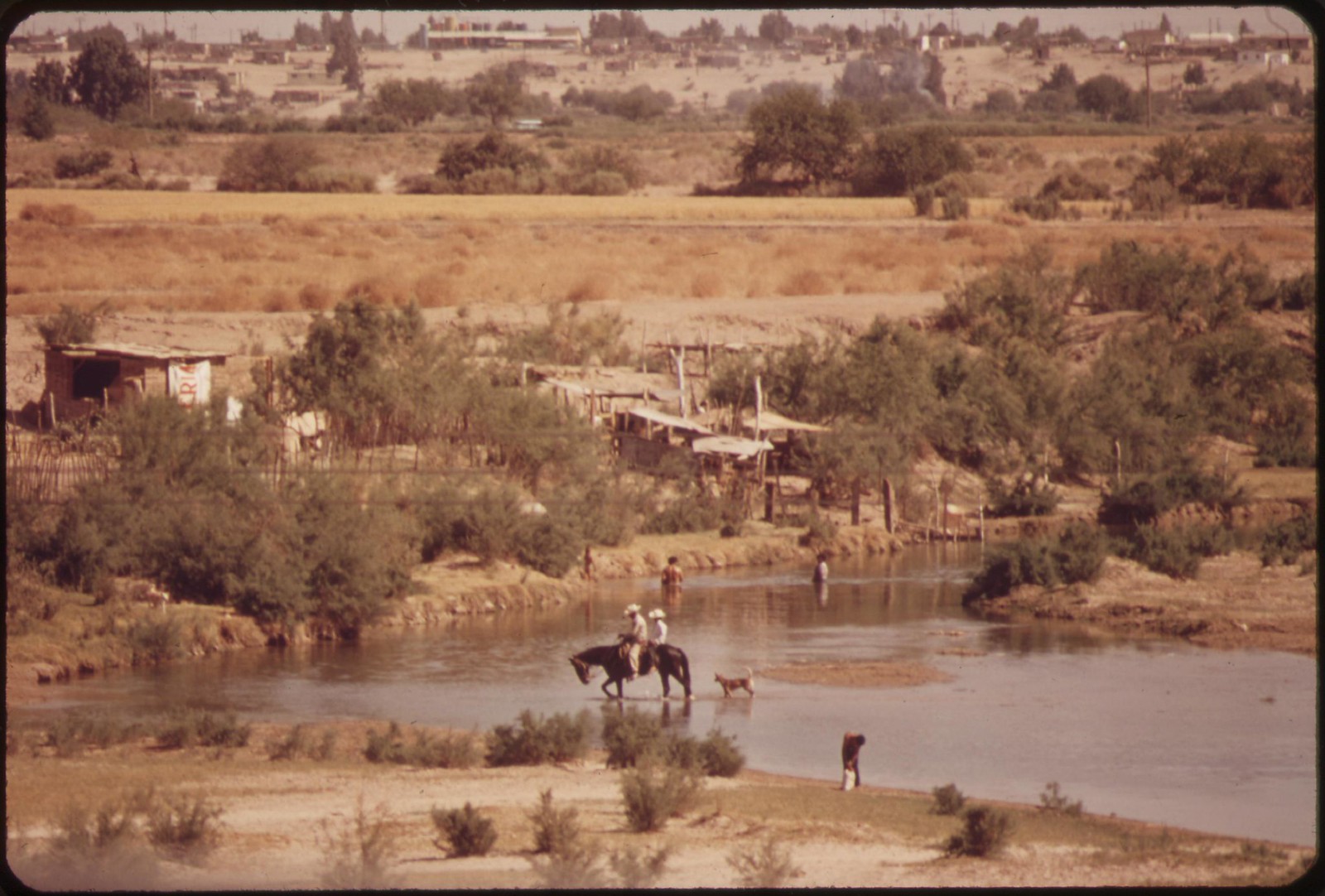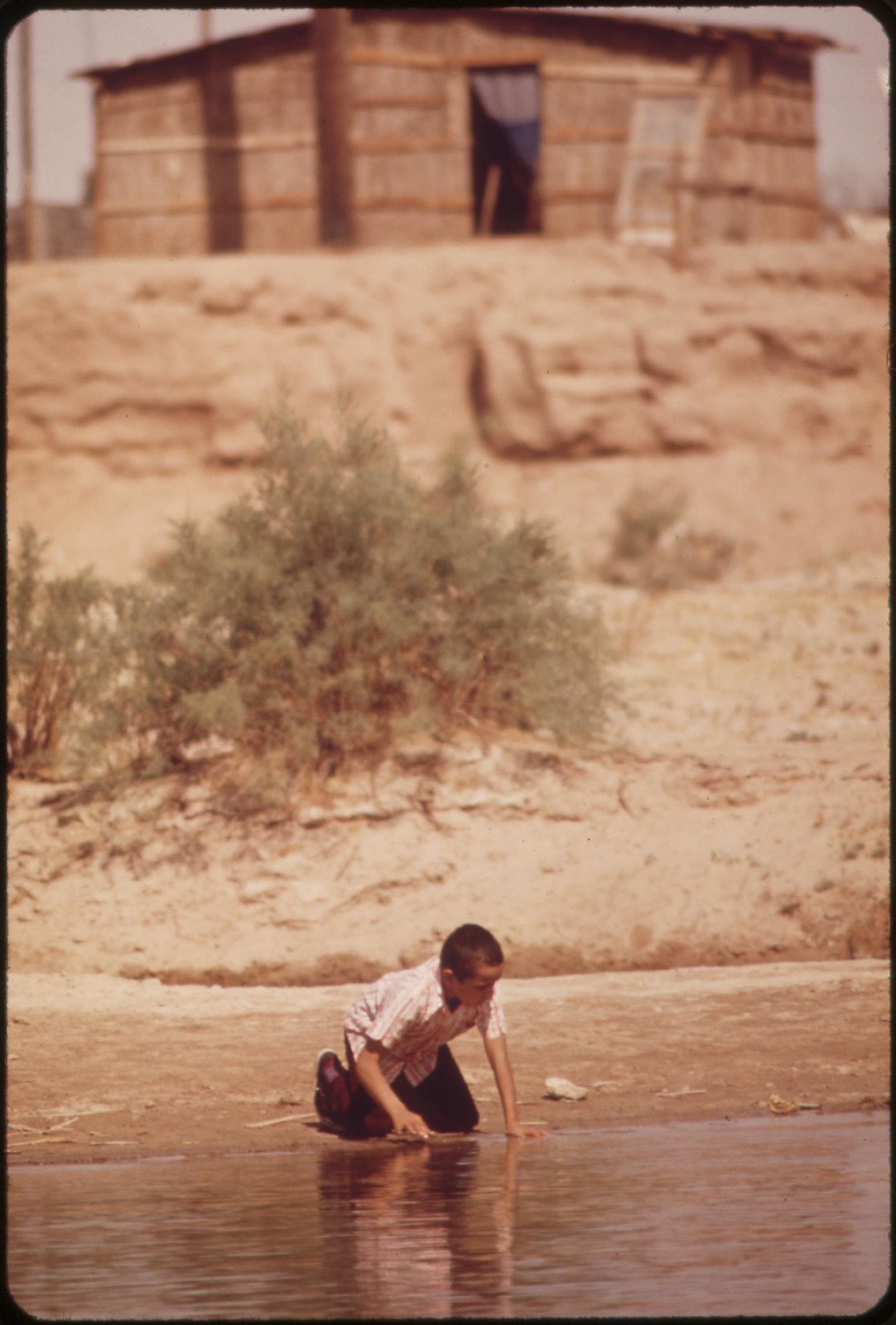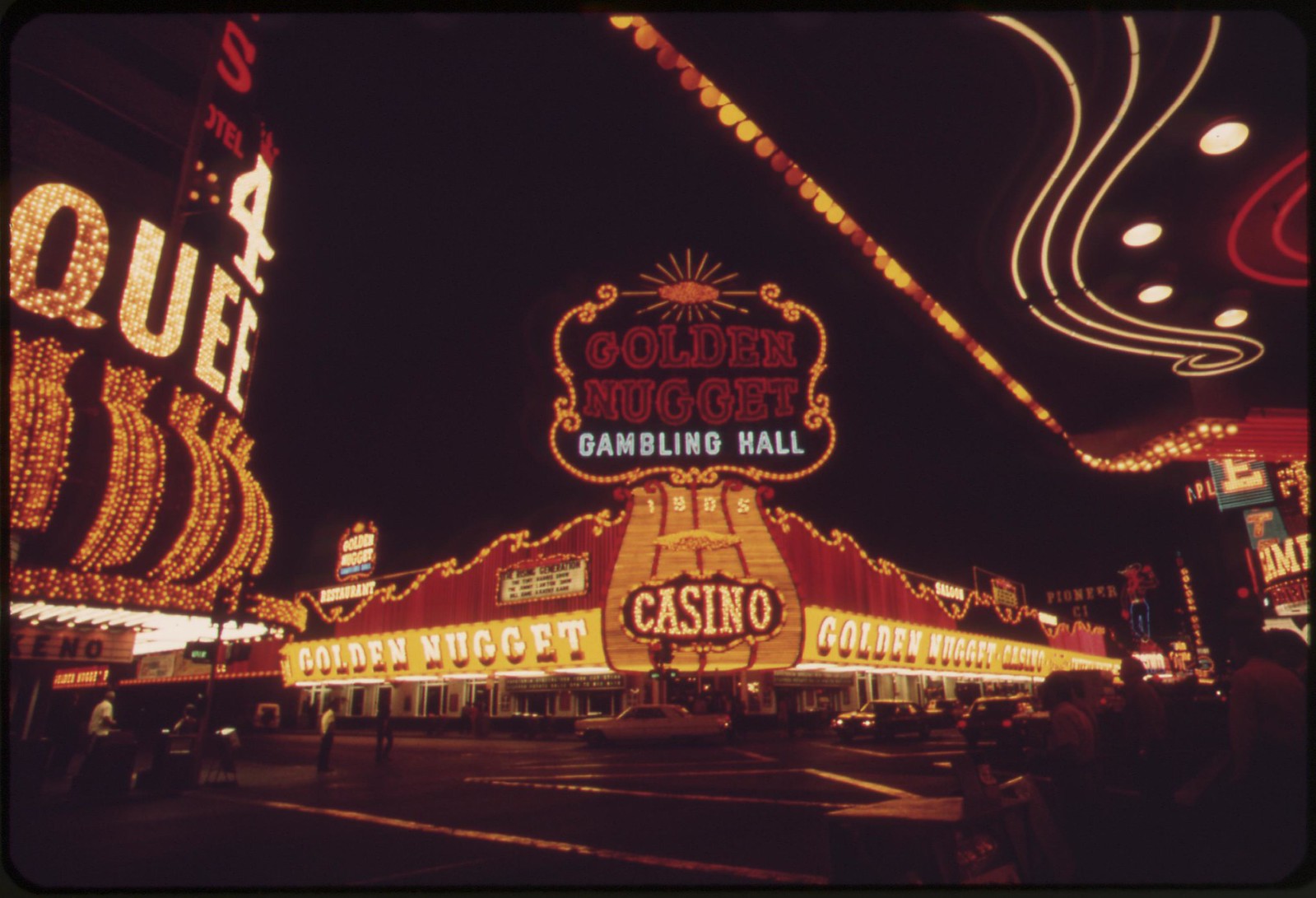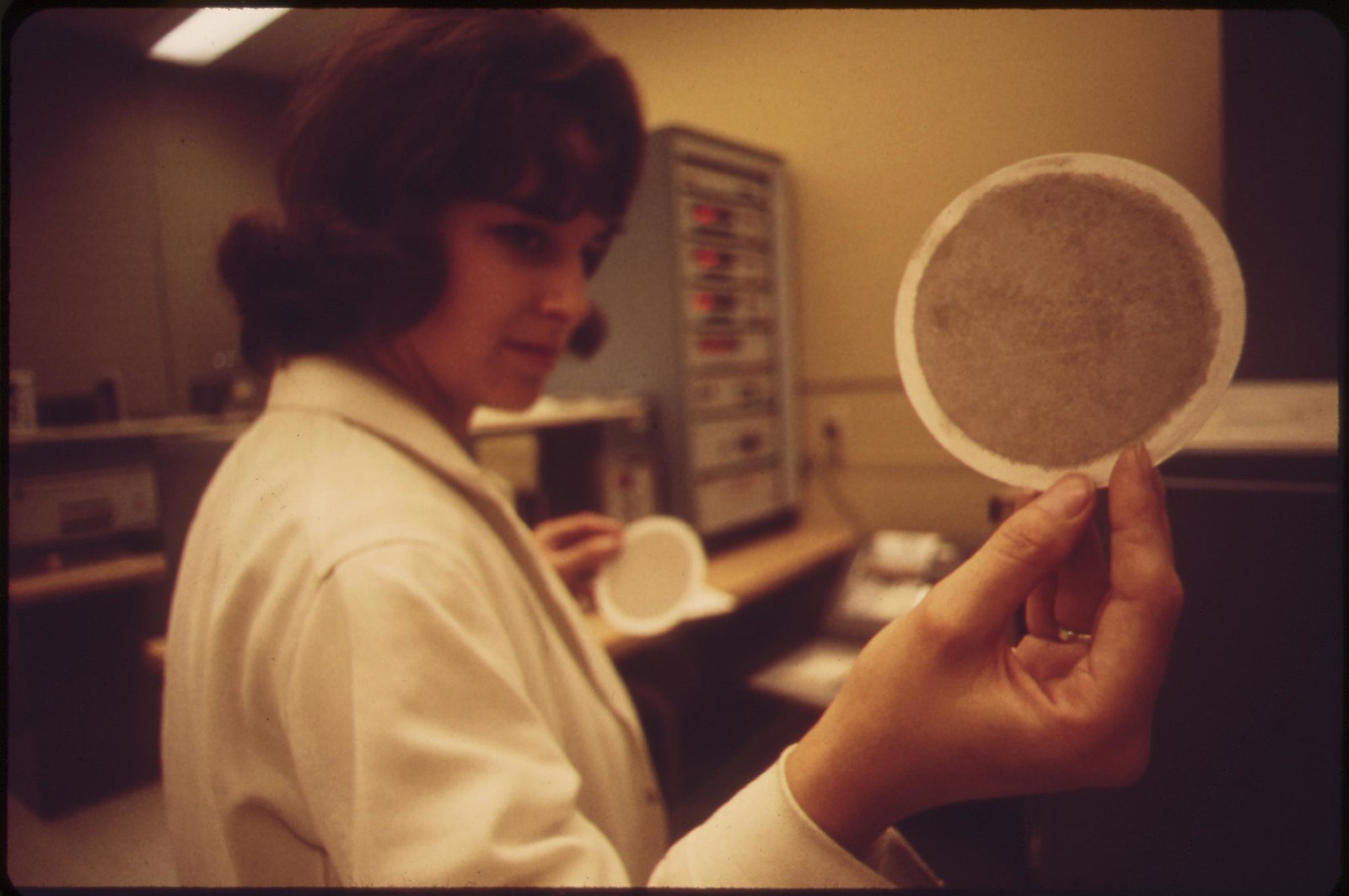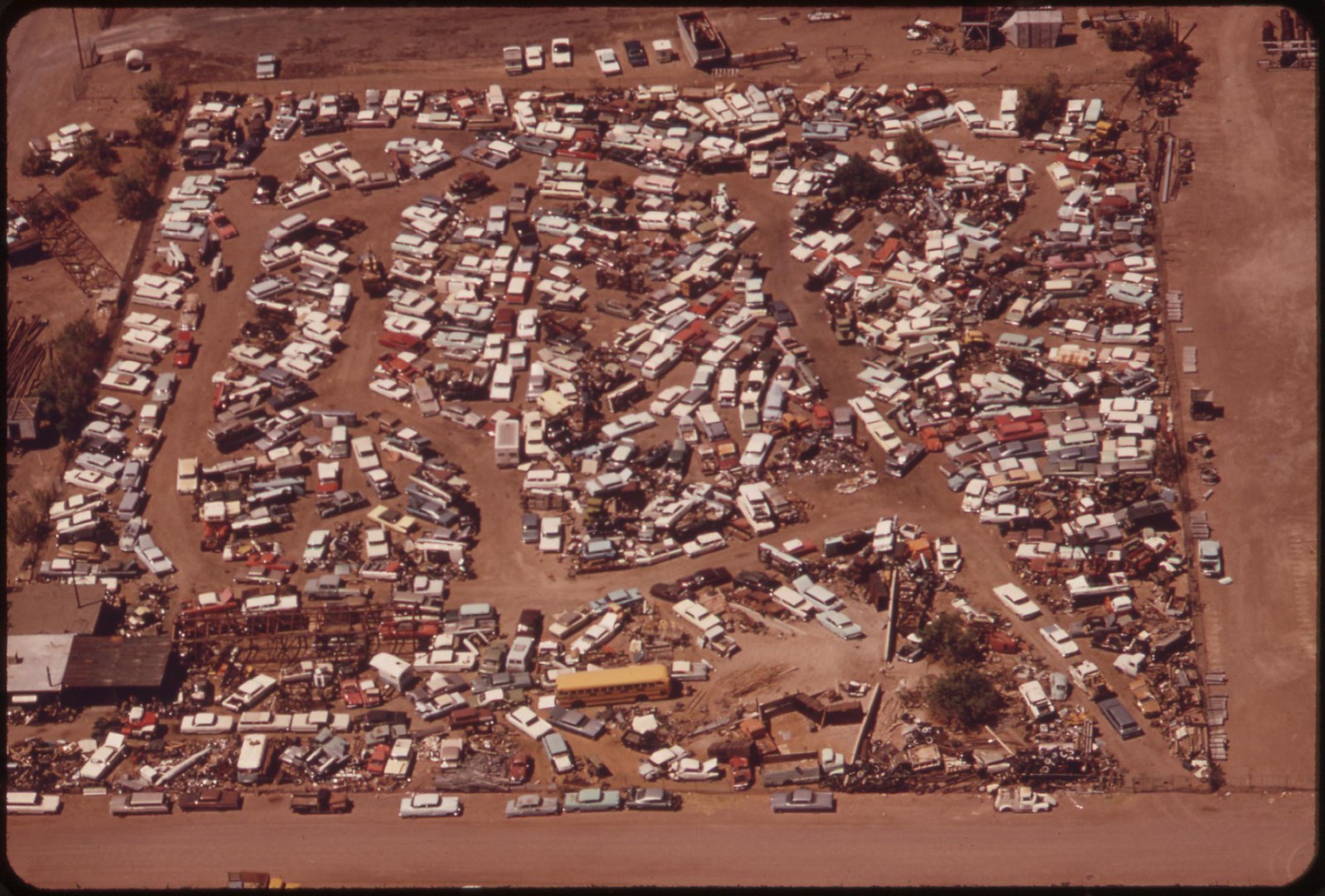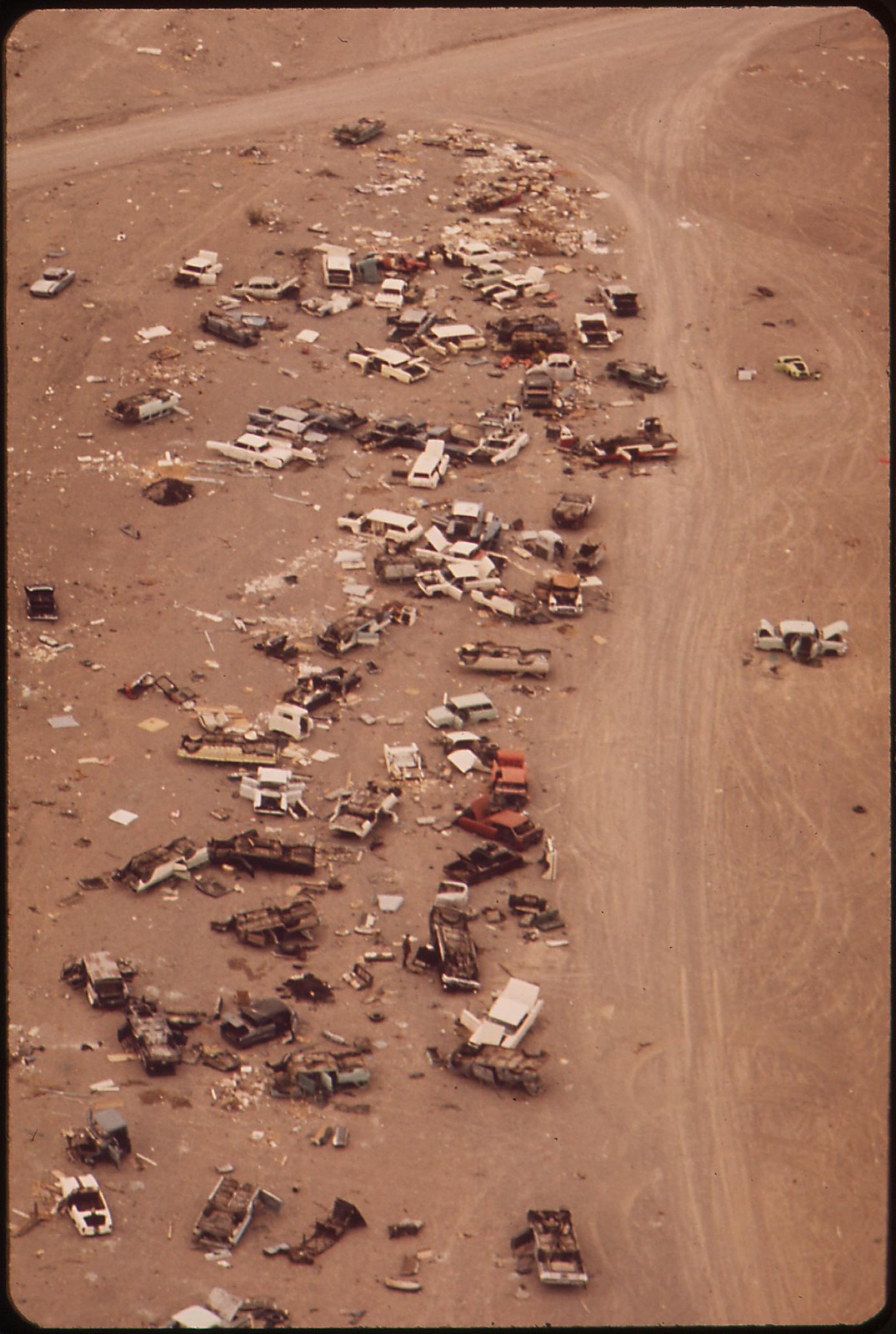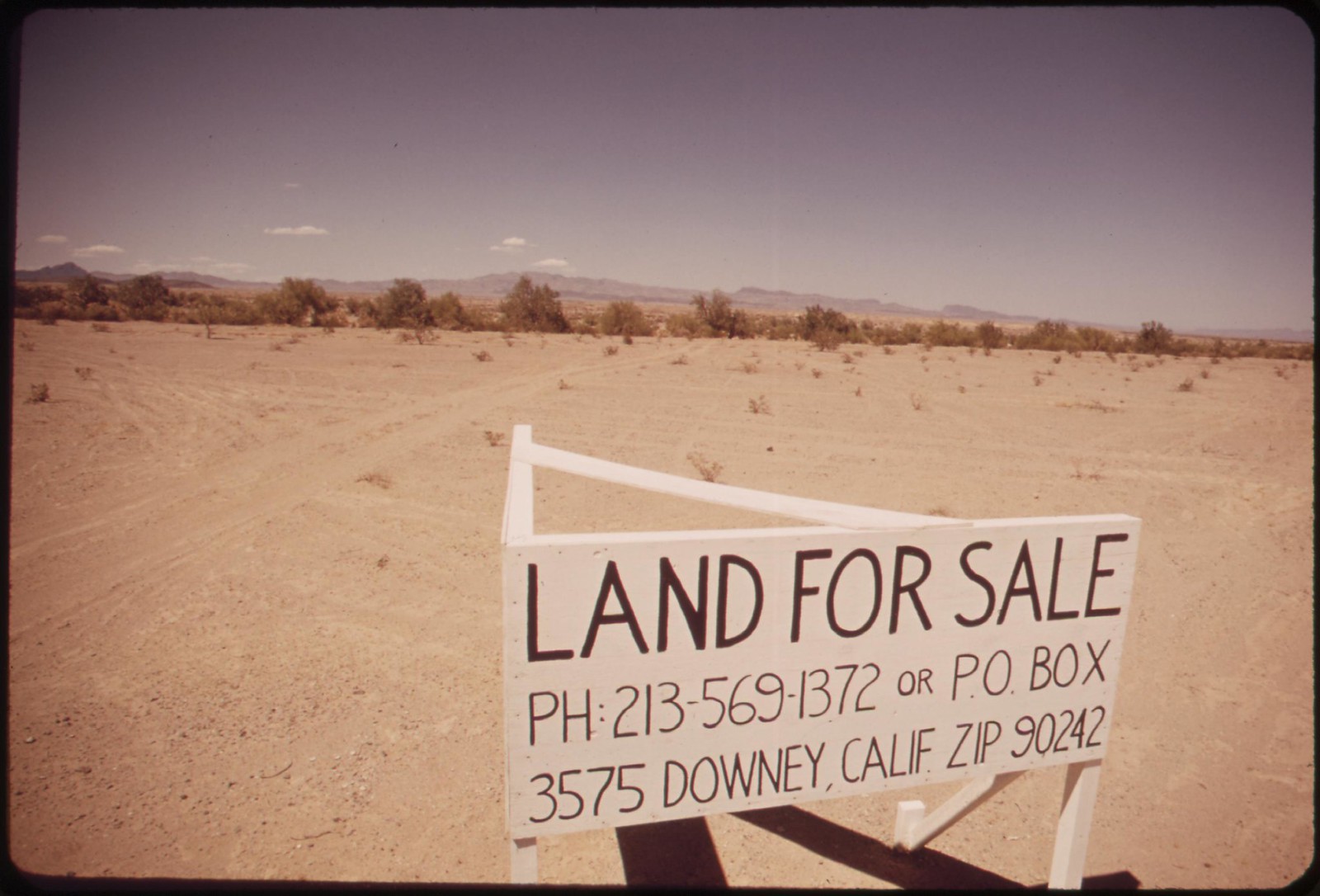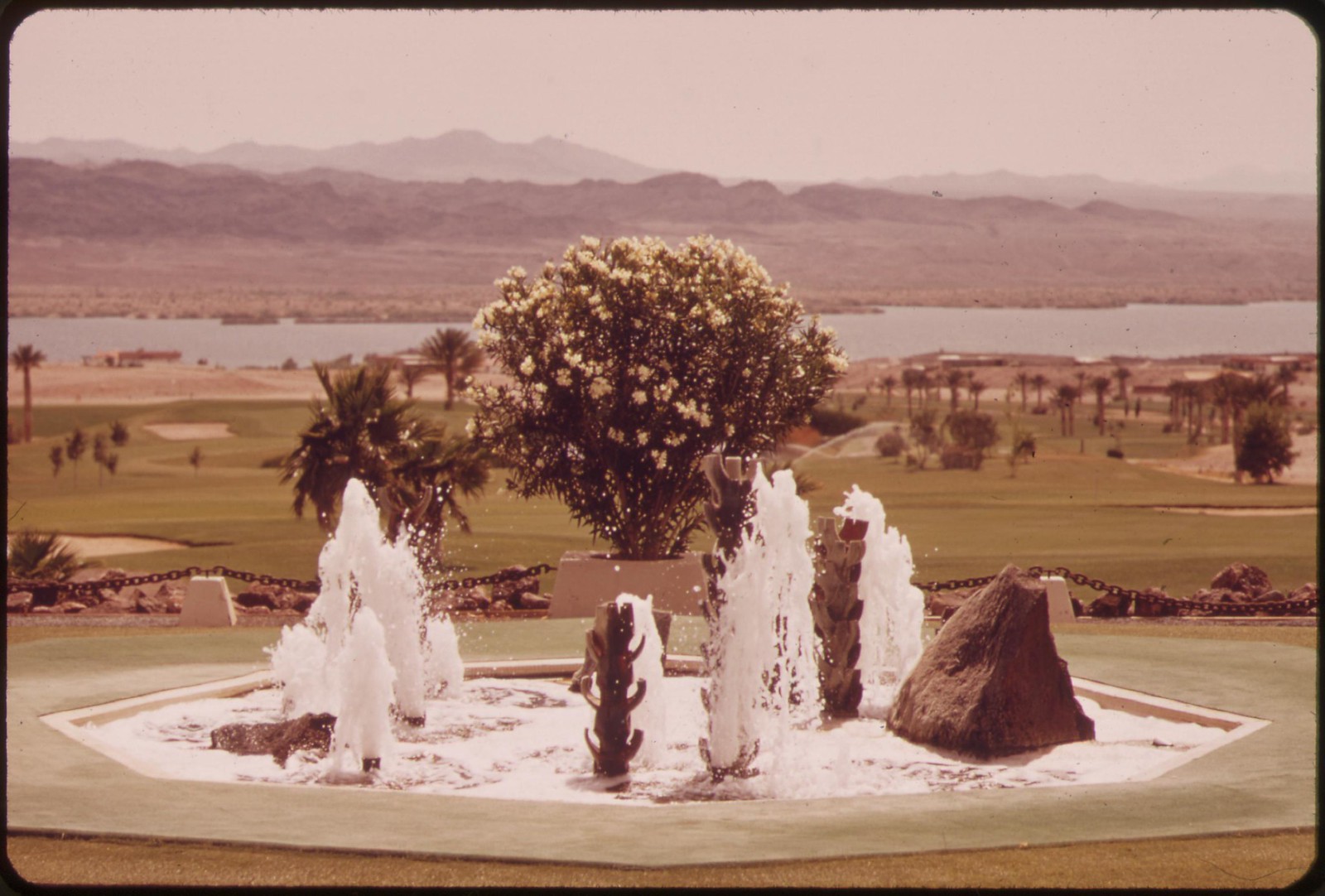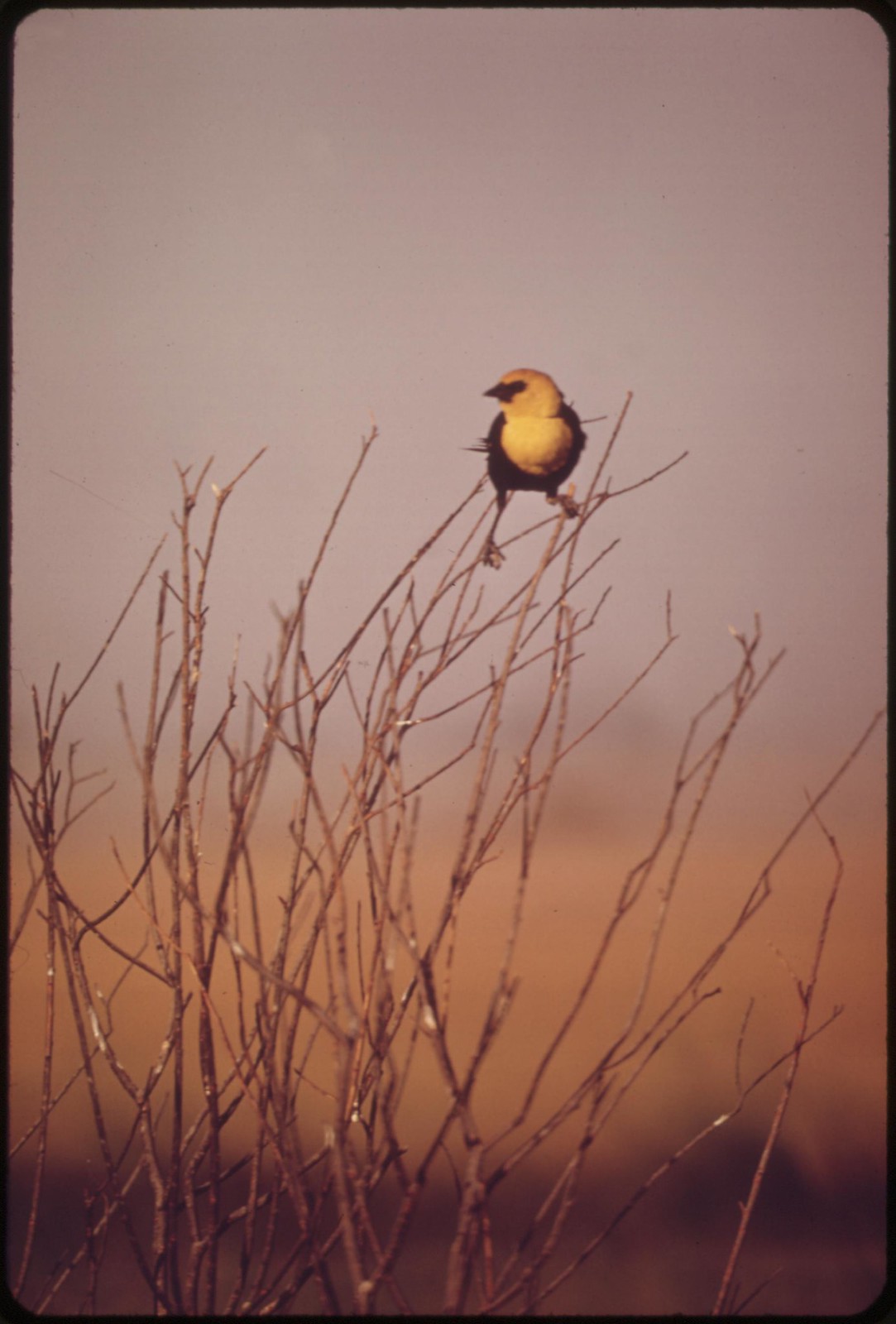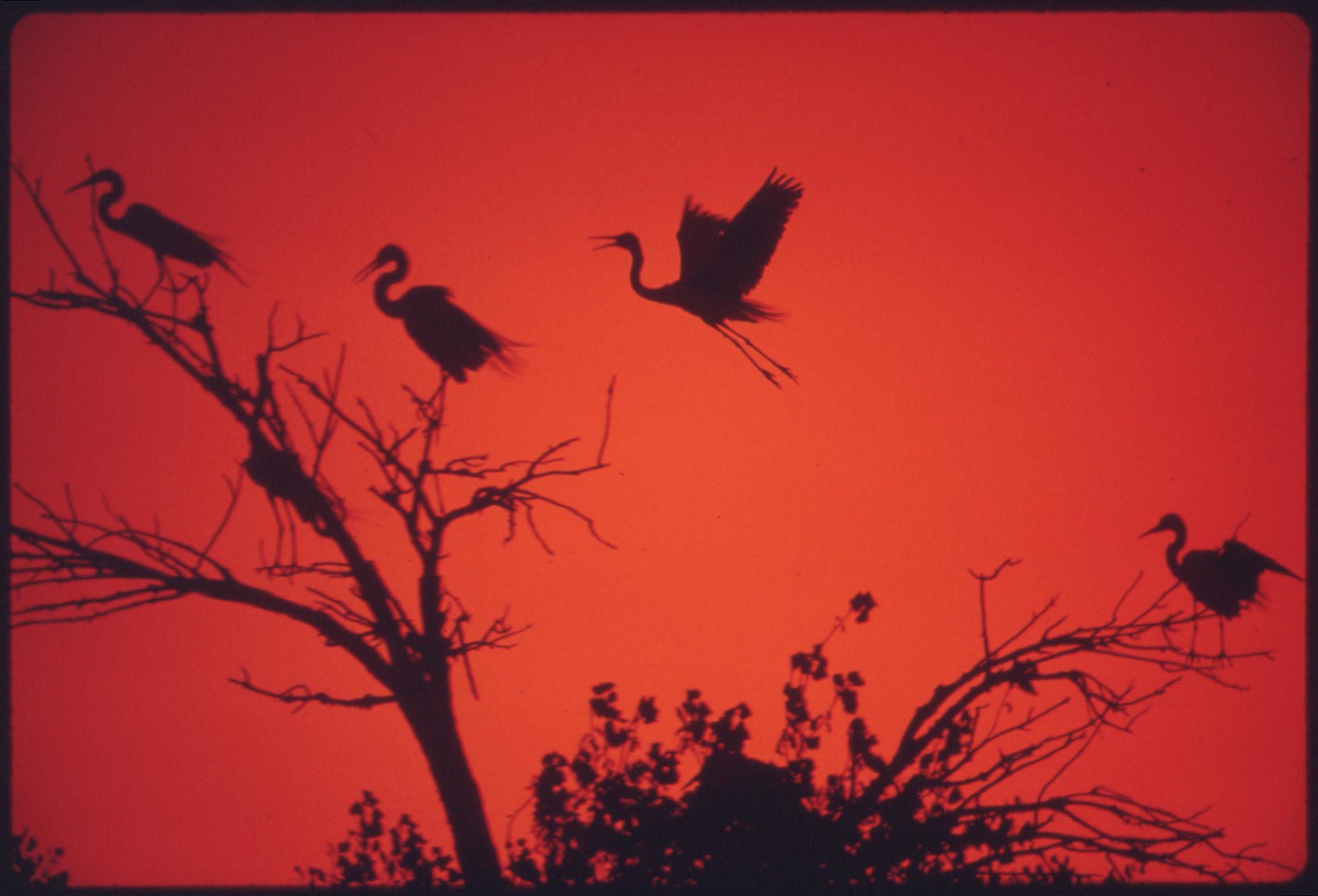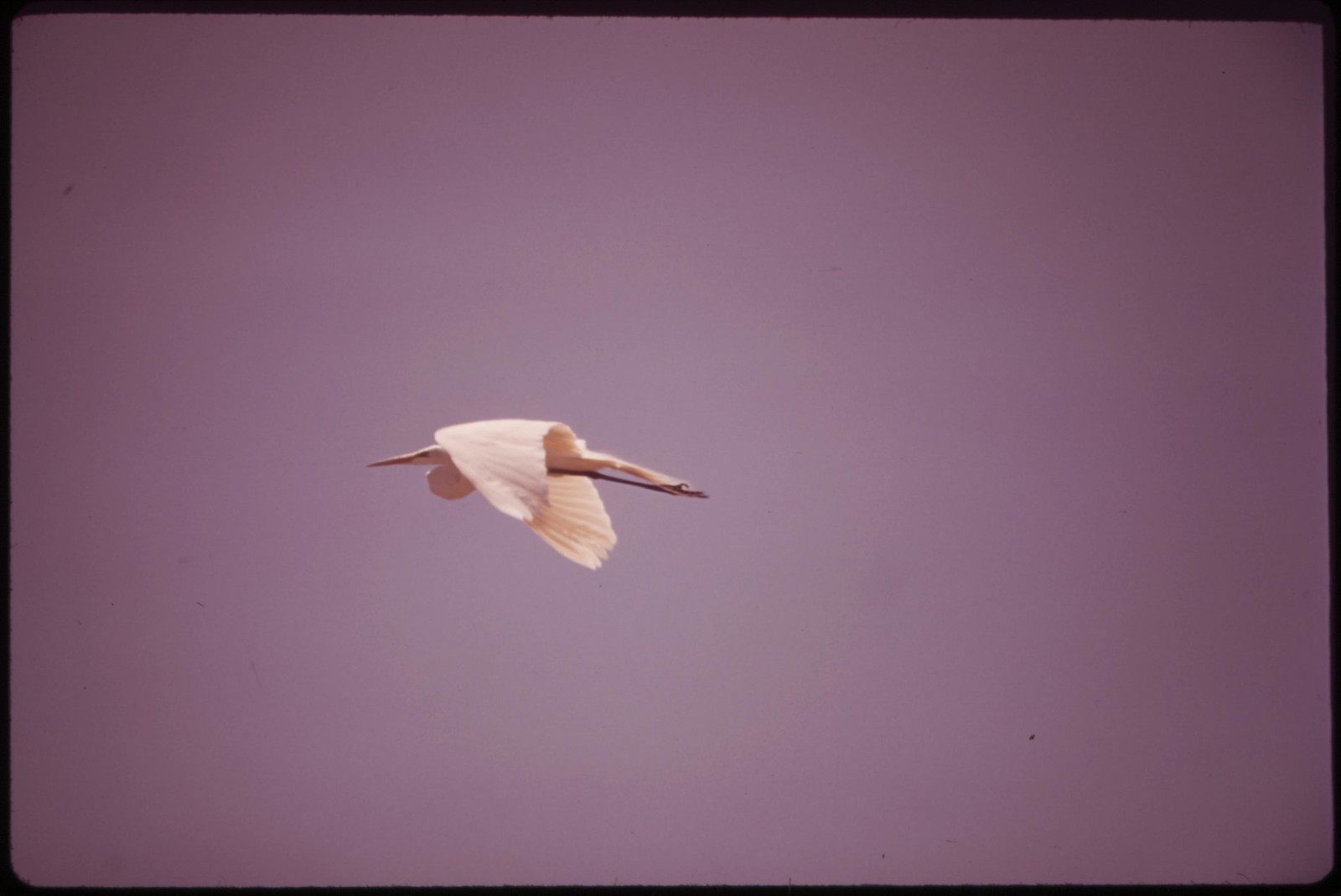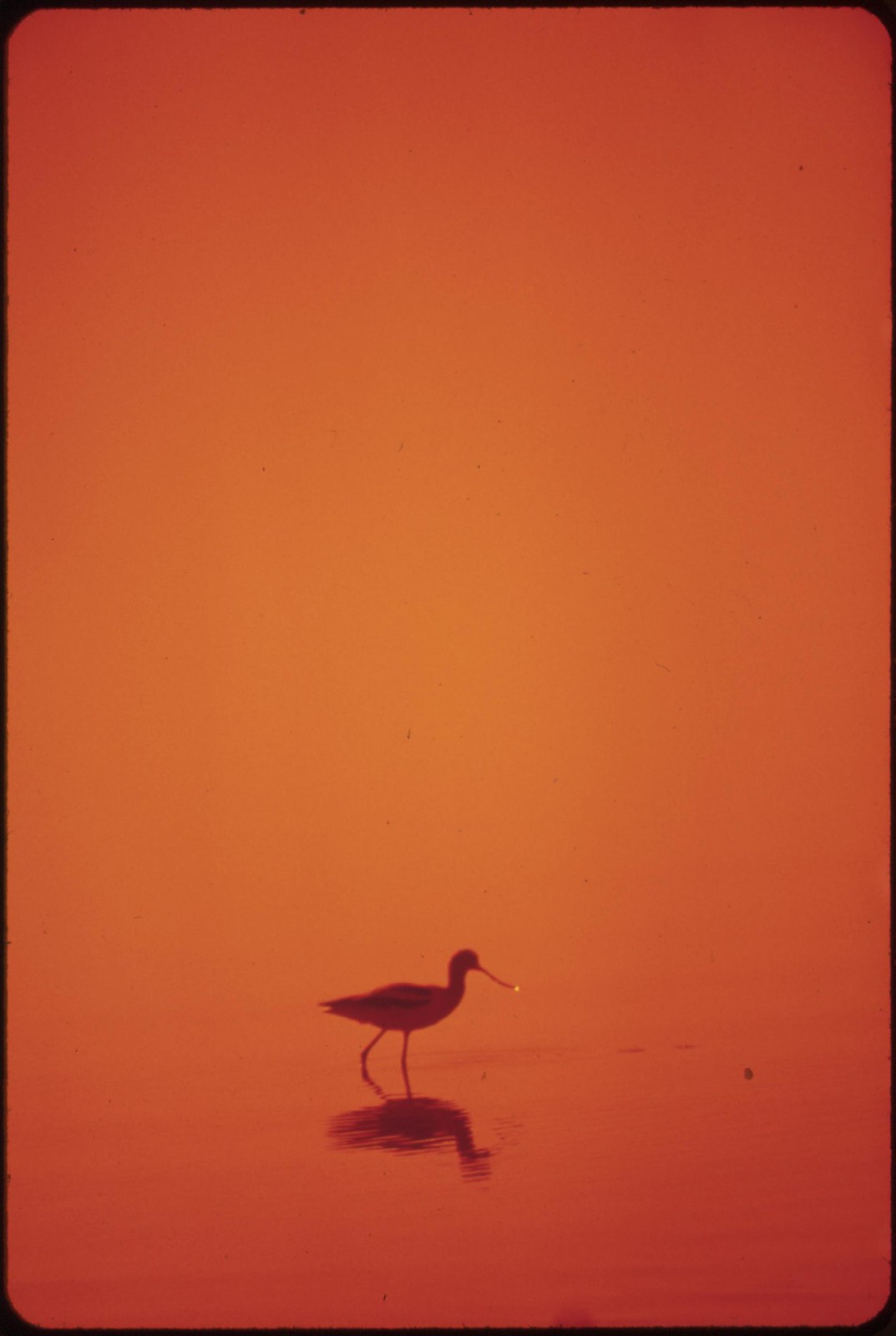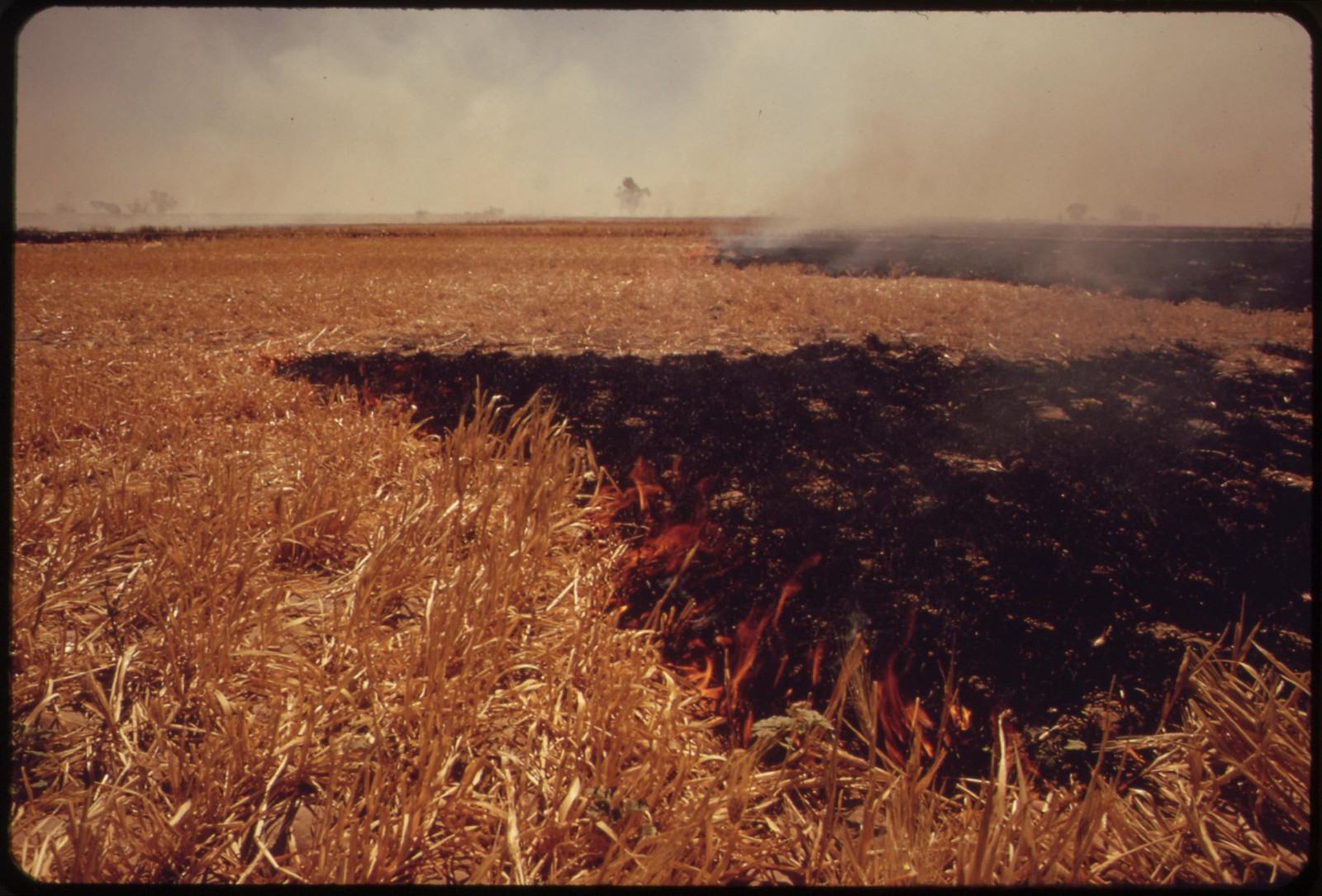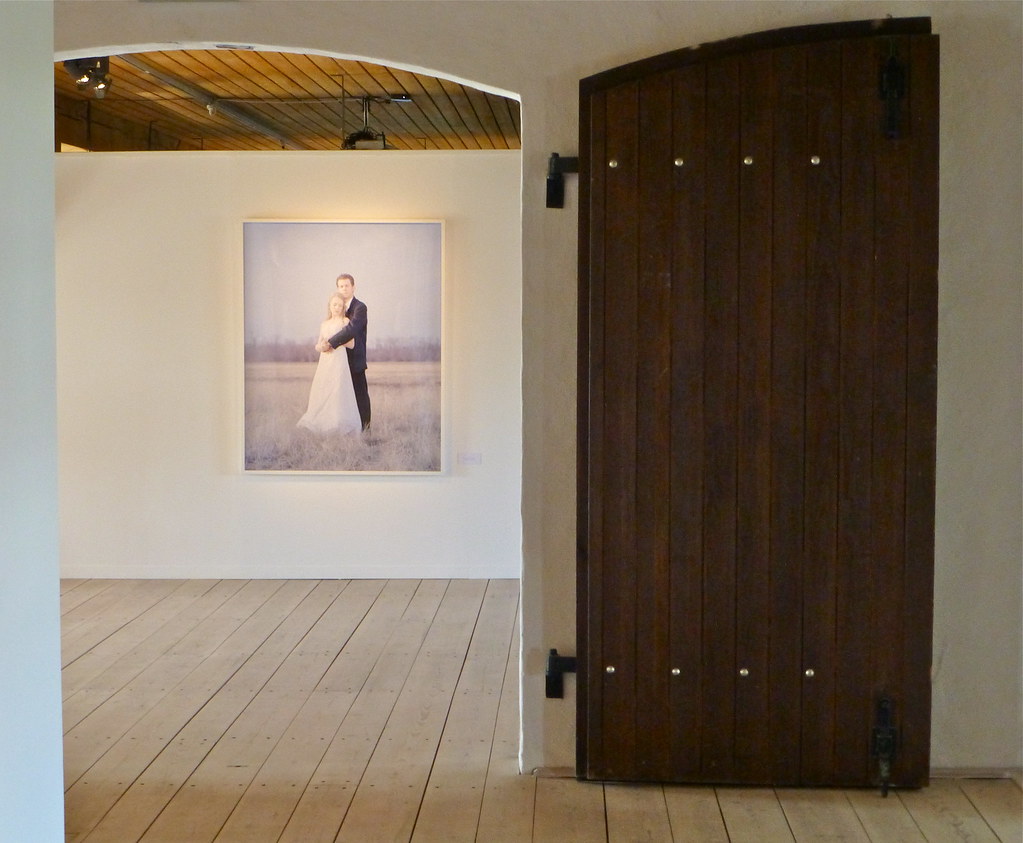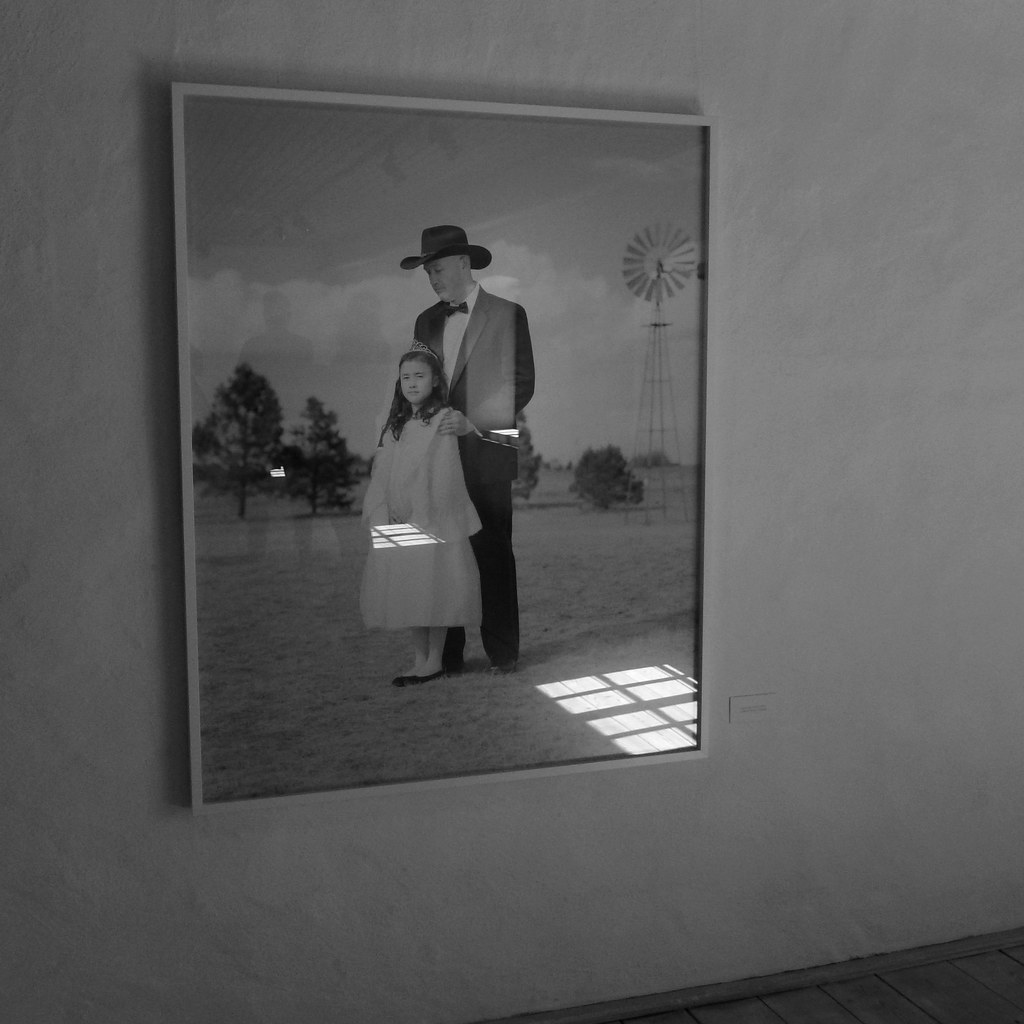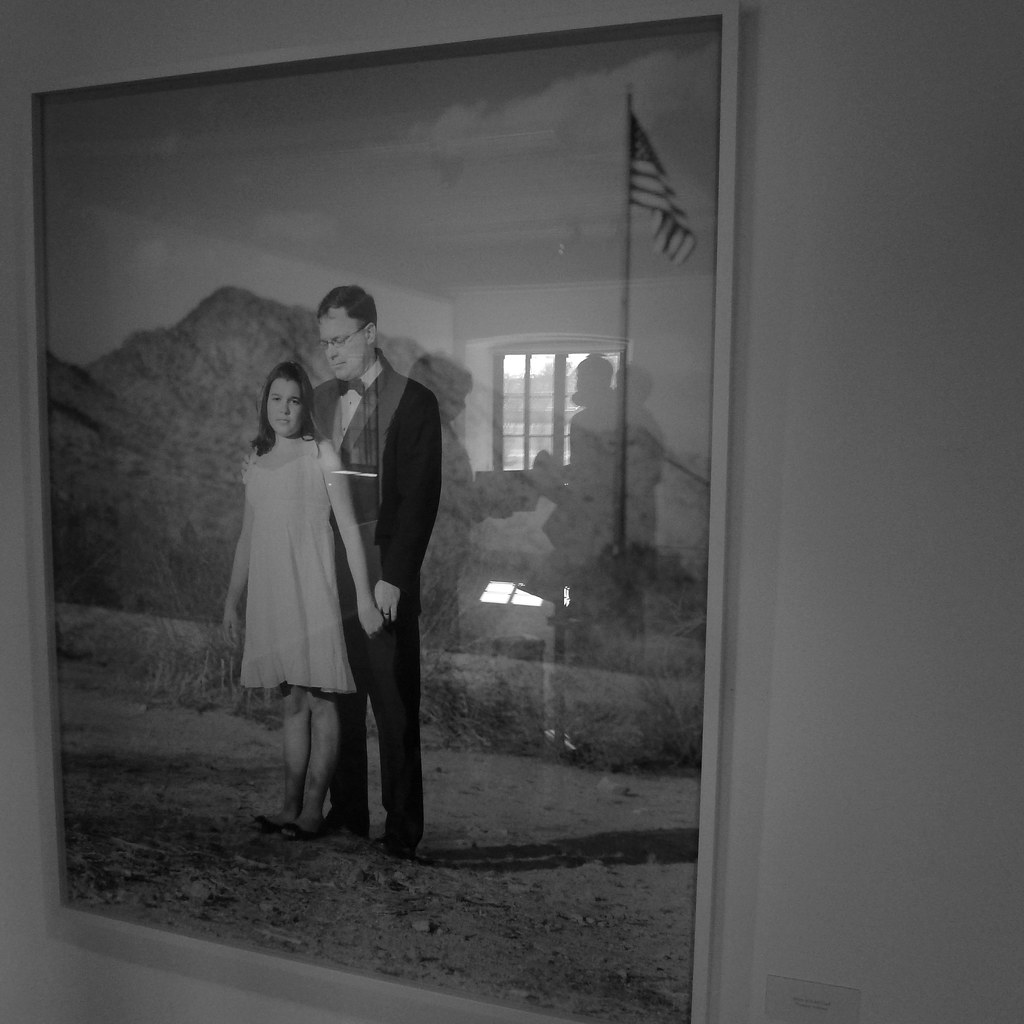.
Tommy Bartlett's Pancake and Pizza Restaurant, Lake Delton, Wisconsin. Photographer's general caption: "Near the town of Wisconsin Dells the Wisconsin River channels through deep, soft sandstone cliffs, cutting rock into fantastic shapes. These natural splendors have given rise to a booming tourist industry. People come in droves, often in campers and trailers. Boat trips, shops, bars, and diversions of every kind vie for patronage in an amusement complex extending 2 or 3 miles beyond the town.": photo byJonas Dovydenas (1939-) for the Environmental Protection Agency Project DOCUMERICA, September 1973 (US National Archives)
Yellow Olds with 1970 Iowa plates so bilious you put me in mind of adventure
seeking back in the lost time
when all it took to inspire the heart with a prolonged rush of expectation
was the idea of a deranged weekend at the Dells

Near the town of Wisconsin Dells the Wisconsin River channels through deep, soft sandstone cliffs, cutting rock into fantastic shapes. These natural splendors have given rise to a booming tourist industry. People come in droves, often in campers and trailers. Boat trips, shops, bars, and diversions of every kind vie for patronage in an amusement complex extending 2 or 3 miles beyond the town: photo byJonas Dovydenas (1939-) for the Environmental Protection Agency Project DOCUMERICA, September 1973 (US National Archives)
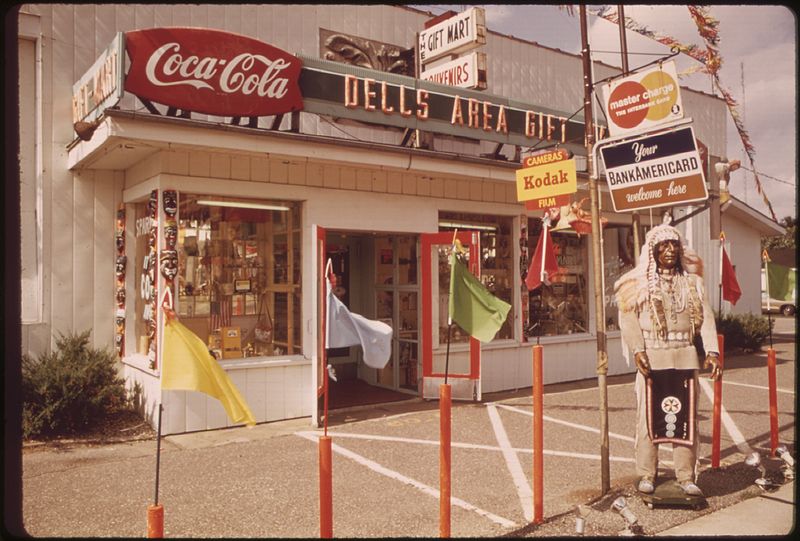
Near the town of Wisconsin Dells the Wisconsin River channels through deep, soft sandstone cliffs, cutting rock into fantastic shapes. These natural splendors have given rise to a booming tourist industry. People come in droves, often in campers and trailers. Boat trips, shops, bars, and diversions of every kind vie for patronage in an amusement complex extending 2 or 3 miles beyond the town: photo byJonas Dovydenas (1939-) for the Environmental Protection Agency Project DOCUMERICA, September 1973 (US National Archives)
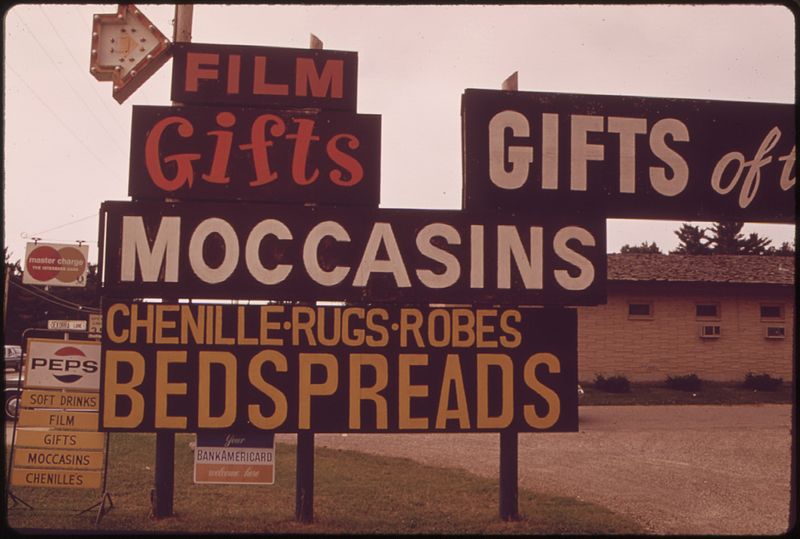
Near the town of Wisconsin Dells the Wisconsin River channels through deep, soft sandstone cliffs, cutting rock into fantastic shapes. These natural splendors have given rise to a booming tourist industry. People come in droves, often in campers and trailers. Boat trips, shops, bars, and diversions of every kind vie for patronage in an amusement complex extending 2 or 3 miles beyond the town: photo byJonas Dovydenas (1939-) for the Environmental Protection Agency Project DOCUMERICA, September 1973 (US National Archives)
Near the town of Wisconsin Dells the Wisconsin River channels through deep, soft sandstone cliffs, cutting rock into fantastic shapes. These natural splendors have given rise to a booming tourist industry. People come in droves, often in campers and trailers. Boat trips, shops, bars, and diversions of every kind vie for patronage in an amusement complex extending 2 or 3 miles beyond the town: photo byJonas Dovydenas (1939-) for the Environmental Protection Agency Project DOCUMERICA, September 1973 (US National Archives)
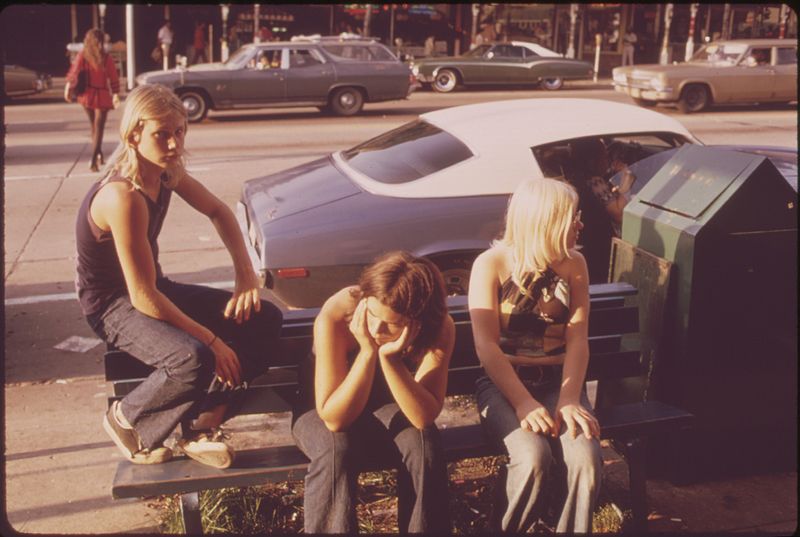
Near the town of Wisconsin Dells the Wisconsin River channels through deep, soft sandstone cliffs, cutting rock into fantastic shapes. These natural splendors have given rise to a booming tourist industry. People come in droves, often in campers and trailers. Boat trips, shops, bars, and diversions of every kind vie for patronage in an amusement complex extending 2 or 3 miles beyond the town: photo byJonas Dovydenas (1939-) for the Environmental Protection Agency Project DOCUMERICA, September 1973 (US National Archives)

Near the town of Wisconsin Dells the Wisconsin River channels through deep, soft sandstone cliffs, cutting rock into fantastic shapes. These natural splendors have given rise to a booming tourist industry. People come in droves, often in campers and trailers. Boat trips, shops, bars, and diversions of every kind vie for patronage in an amusement complex extending 2 or 3 miles beyond the town: photo byJonas Dovydenas (1939-) for the Environmental Protection Agency Project DOCUMERICA, September 1973 (US National Archives)

Near the town of Wisconsin Dells the Wisconsin River channels through deep, soft sandstone cliffs, cutting rock into fantastic shapes. These natural splendors have given rise to a booming tourist industry. People come in droves, often in campers and trailers. Boat trips, shops, bars, and diversions of every kind vie for patronage in an amusement complex extending 2 or 3 miles beyond the town: photo byJonas Dovydenas (1939-) for the Environmental Protection Agency Project DOCUMERICA, September 1973 (US National Archives)

Near the town of Wisconsin Dells the Wisconsin River channels through deep, soft sandstone cliffs, cutting rock into fantastic shapes. These natural splendors have given rise to a booming tourist industry. People come in droves, often in campers and trailers. Boat trips, shops, bars, and diversions of every kind vie for patronage in an amusement complex extending 2 or 3 miles beyond the town: photo byJonas Dovydenas (1939-) for the Environmental Protection Agency Project DOCUMERICA, September 1973 (US National Archives)
Near the town of Wisconsin Dells the Wisconsin River channels through deep, soft sandstone cliffs, cutting rock into fantastic shapes. These natural splendors have given rise to a booming tourist industry. People come in droves, often in campers and trailers. Boat trips, shops, bars, and diversions of every kind vie for patronage in an amusement complex extending 2 or 3 miles beyond the town: photo byJonas Dovydenas (1939-) for the Environmental Protection Agency Project DOCUMERICA, September 1973 (US National Archives)
Boating on the Wisconsin River at Wisconsin Dells: photo byJonas Dovydenas (1939-) for the Environmental Protection Agency Project DOCUMERICA, September 1973 (US National Archives)

Boating on the Wisconsin River at Wisconsin Dells: photo byJonas Dovydenas (1939-) for the Environmental Protection Agency Project DOCUMERICA, September 1973 (US National Archives)
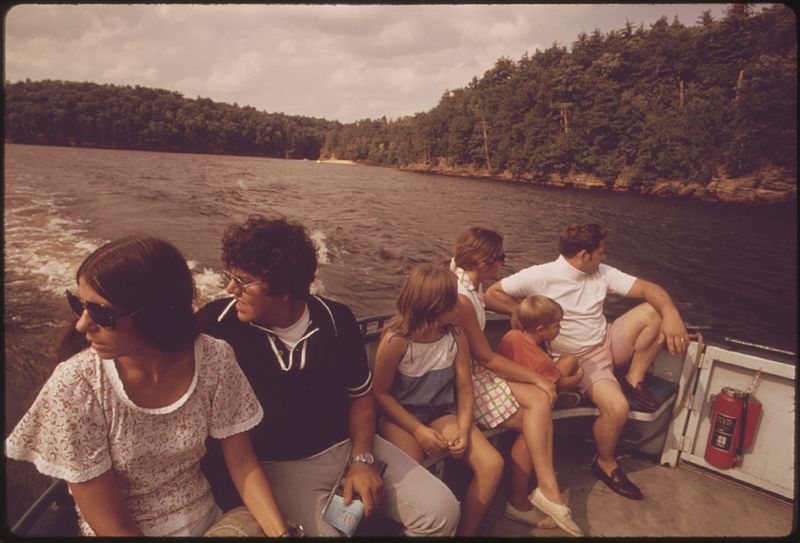
Near the town of Wisconsin Dells the Wisconsin River channels through deep, soft sandstone cliffs, cutting rock into fantastic shapes. These natural splendors have given rise to a booming tourist industry. People come in droves, often in campers and trailers. Boat trips, shops, bars, and diversions of every kind vie for patronage in an amusement complex extending 2 or 3 miles beyond the town: photo byJonas Dovydenas (1939-) for the Environmental Protection Agency Project DOCUMERICA, September 1973 (US National Archives)

Near the town of Wisconsin Dells the Wisconsin River channels through deep, soft sandstone cliffs, cutting rock into fantastic shapes. These natural splendors have given rise to a booming tourist industry. People come in droves, often in campers and trailers. Boat trips, shops, bars, and diversions of every kind vie for patronage in an amusement complex extending 2 or 3 miles beyond the town: photo byJonas Dovydenas (1939-) for the Environmental Protection Agency Project DOCUMERICA, September 1973 (US National Archives)
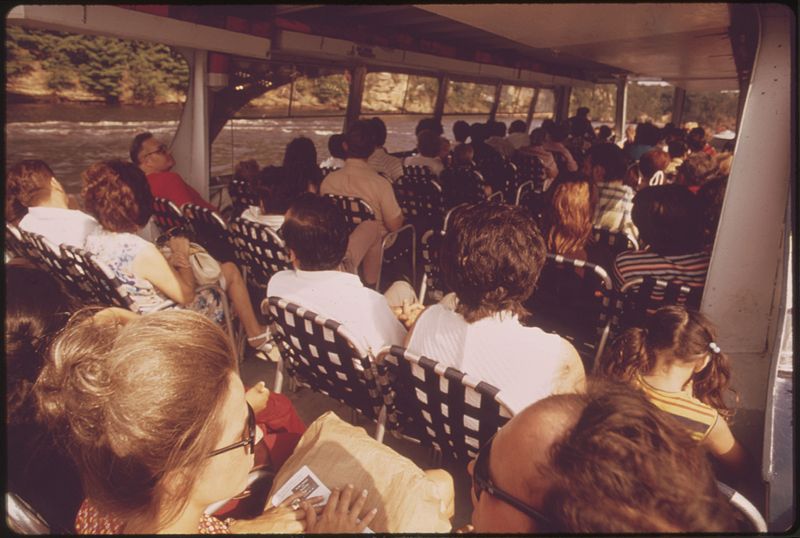
Near the town of Wisconsin Dells the Wisconsin River channels through deep, soft sandstone cliffs, cutting rock into fantastic shapes. These natural splendors have given rise to a booming tourist industry. People come in droves, often in campers and trailers. Boat trips, shops, bars, and diversions of every kind vie for patronage in an amusement complex extending 2 or 3 miles beyond the town: photo byJonas Dovydenas (1939-) for the Environmental Protection Agency Project DOCUMERICA, September 1973 (US National Archives)

Near the town of Wisconsin Dells the Wisconsin River channels through deep, soft sandstone cliffs, cutting rock into fantastic shapes. These natural splendors have given rise to a booming tourist industry. People come in droves, often in campers and trailers. Boat trips, shops, bars, and diversions of every kind vie for patronage in an amusement complex extending 2 or 3 miles beyond the town: photo byJonas Dovydenas (1939-) for the Environmental Protection Agency Project DOCUMERICA, September 1973 (US National Archives)

Near the town of Wisconsin Dells the Wisconsin River channels through deep, soft sandstone cliffs, cutting rock into fantastic shapes. These natural splendors have given rise to a booming tourist industry. People come in droves, often in campers and trailers. Boat trips, shops, bars, and diversions of every kind vie for patronage in an amusement complex extending 2 or 3 miles beyond the town: photo byJonas Dovydenas (1939-) for the Environmental Protection Agency Project DOCUMERICA, September 1973 (US National Archives)
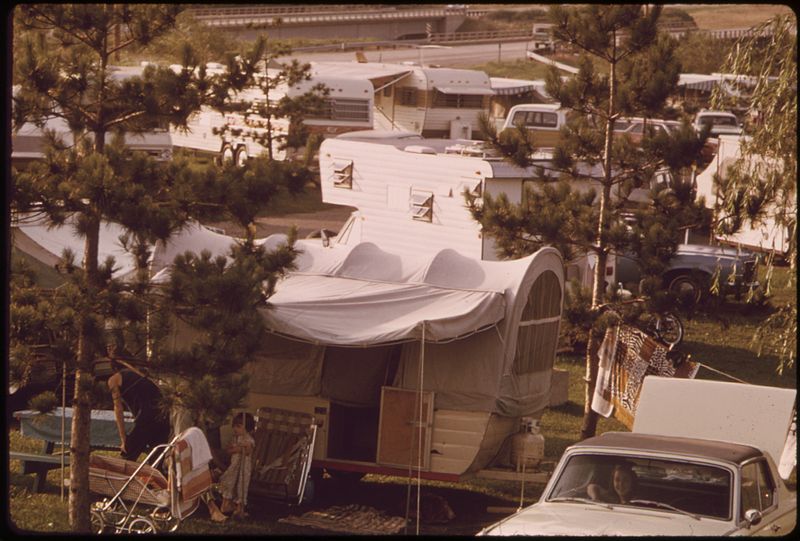
Near the town of Wisconsin Dells the Wisconsin River channels through deep, soft sandstone cliffs, cutting rock into fantastic shapes. These natural splendors have given rise to a booming tourist industry. People come in droves, often in campers and trailers. Boat trips, shops, bars, and diversions of every kind vie for patronage in an amusement complex extending 2 or 3 miles beyond the town: photo byJonas Dovydenas (1939-) for the Environmental Protection Agency Project DOCUMERICA, September 1973 (US National Archives)

Youngsters fishing at Wisconsin Dells on the Wisconsin River: photo byJonas Dovydenas (1939-) for the Environmental Protection Agency Project DOCUMERICA, September 1973 (US National Archives)
Canoeing on the Wisconsin River at Wisconsin Dells: photo byJonas Dovydenas (1939-) for the Environmental Protection Agency Project DOCUMERICA, September 1973 (US National Archives)
